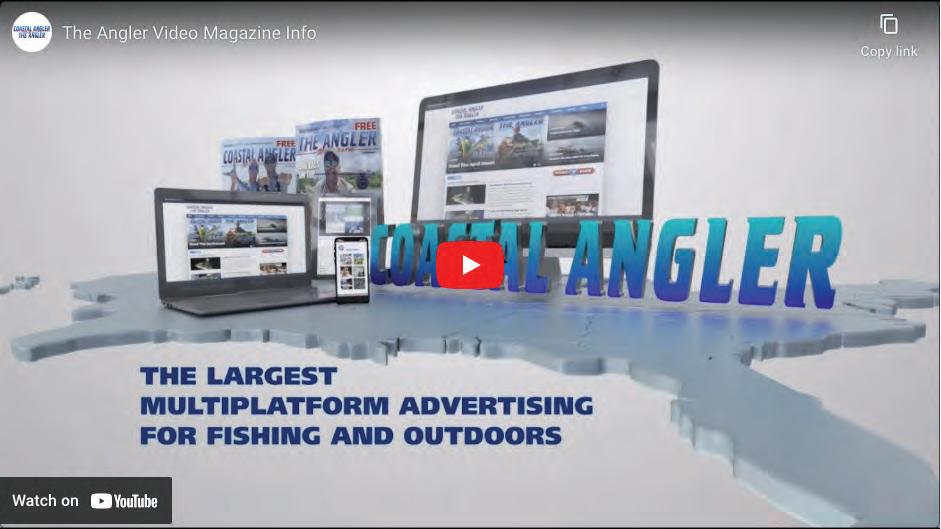














By Capt. John Luck
The rewards of a catch made while sight fishing go well beyond the satisfaction of landing the fish. Take every opportunity to observe fish in their natural habitat. To maximize success, an angler should take in as much information while on the water as possible.
Regardless of your target species, tackle of choice, or home waters, actually seeing the fish is not only highly enjoyable but one of the best learning experiences an angler can have. It leads to a detailed understanding of fish behavior.
The sight fishing angler gets to see fish react to everything around them, from the lure, bait, or fly presented to them, to the actual structure of the waterbody they live in. Recognizing their cues of interest or disinterest becomes applicable for species in both fresh and saltwater. Obviously remaining as quiet as possible, making sure that you have a good vantage point and during daylight hours

having a good pair of sunglasses are all vital to your success. My personal favorite is the Bajio Tech Angler Collection due to their ultra clear polarized lens.
Sight fishing enables an angler to have more control over the outcome and allows you to adjust your bait and techniques to ensure a strike.
Sight fishing isn’t just about catching fish; it’s about understanding their behavior, engaging with the process, and enjoying the thrill of spotting your target underwater. So next time you’re out on the water, keep your eyes peeled—you might just discover a whole new dimension to your angling.
I hope you find this article informative! If you have any other requests or questions, feel free to ask. Tight lines.
Contact Capt. John Luck at luckydogman@msn.com.






To support their mission to restore and protect Florida’s waters, Captains For Clean Water (CFCW) is raffling off a one-of-a-kind custom 2024 Hell’s Bay Professional Skiff, along with a literal boatload of gear from partner brands Orvis, YETI and Costa Del Mar.
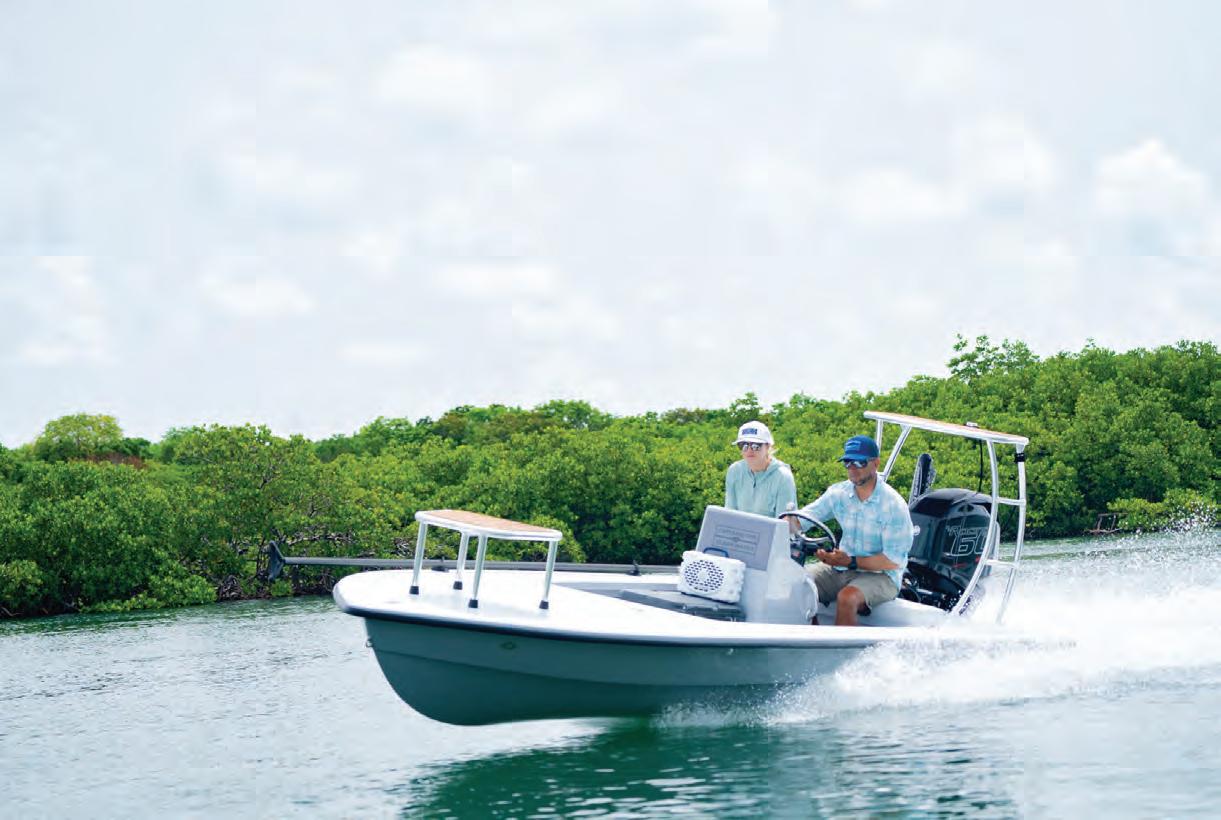

2024 CUSTOM HELL’S BAY PROFESSIONAL 17.8’ SKIFF
MERCURY 60R • SEADEK FLOOR KIT • RAM-LIN TRAILER • SIMRAD DISPLAY
• POWER POLE 6FT. PRO • TH MARINE
JACK PLATE • STIFFY GUIDE PUSH POLE
• 4 ORVIS HELIOS FLYRODS • $1K COSTA
GIFT CARD • ORVIS & YETI GEAR Purchase


To support their mission to restore and protect Florida's waters, Captains For Clean Water (CFCW) is raffling off a one-of-a-kind boat custom crafted by Hell's Bay Boatworks of Titusville, Florida, along with a literal boatload of gear from partner brands Orvis, YETI and Costa Del Mar.
This year's skiff is a Hell's Bay Professional 17.8, the ultimate shallow water technical poling skiff specifically designed for the pursuit of fish in the most challenging shallow water conditions. Carefully engineered for poling the flats with stealth, this skiff is outfitted with a Mercury 60R Motor, T-H Marine Atlas hydraulic Jack Plate Micro Jacker, custom SeaDek floor kit, Ram-Lin aluminum trailer, Simrad NSS9 evo3S multifunction display, a Power Pole 6ft. Pro Series and a Stiffy Guide Series - Graphite 22’ Push Pole.

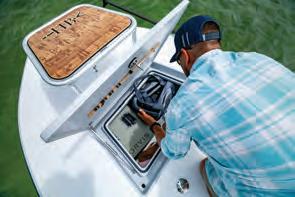
But what really makes this boat unique are the special touches done in collaboration with Orvis. Sporting a multi-tone grey color combination and custom cork SeaDek floor kit, this boat's look and feel was inspired by the Orvis Helios line of fly rods—of which there are four included with the package.
Captains For Clean Water is a Florida-based 501(c)3 grassroots nonprofit on a mission to restore and protect aquatic ecosystems for the use and enjoyment of all. Founded in 2016 by fishing guides, CFCW has united the outdoor industry, business community, and concerned citizens at the forefront of the fight for clean water—the lifeblood of Florida’s economy and $85.9 billion tourism industry.
"In 2016, we started as a couple of fishing guides who were fed up
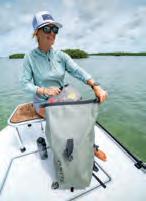
with Florida’s poor water management practices—the toxic discharges from Lake Okeechobee that were poisoning the coasts, starving the Everglades, and devastating the estuaries our livelihoods depended on. And we were convinced that if everyone just knew about these issues, they would’ve been fixed long ago. The solution was known through a plan called Everglades Restoration, but progress had been delayed for decades due to lack of political will and public awareness,” said Capt. Daniel Andrews, Captains For Clean Water’s Co-Founder and Executive Director. “We never set out to start an organization, but as we peeled back the layers, we realized we were neck-deep in a ‘David-versusGoliath’ fight to save our waters. We’ve kept our roots within the guide community and effectively engaged concerned citizens, business communities, outdoor brands, and anglers across the country. As a result, progress is happening at a record pace as more people than ever get involved in the fight for clean water, but we still have a long way to go and we need your help."
Supporters can purchase tickets for a chance to win now through December 31, 2024. Every ticket purchase supports CFCW’s mission to protect and restore Florida’s water resources for the use and enjoyment of all. A winner will be drawn at random on January 12, 2025 at Backyard Social in Fort Myers.
PRESENTED BY IKO PRINTS


Japanese fish printing is on the rise, odds are you’ve seen it more times than you remember. It can be found hanging on restaurant walls, t-shirts, and in man cave’s across the world.
The official name is Gyotaku, which literally translates into “fish” (gyo) and “rubbing” (taku). It originates from mid 19th century Japan and over time evolved into a contemporary art form common today.
Before photography was widely available, fisherman’s tales were nothing but folk lore. With the physical fish fileted
and forgotten, angler’s everywhere had trouble selling their fabricated accounts. Lifetime monsters brought back to the dock were nothing but memories believed by those onboard.
Today it remains the same. A fish without a photo is nothing but a fable. A story without documentation is easily dismissed.
So, it began. Japanese fishermen began keeping scrolls of rice paper and vats of non toxic sumi ink on board. Jaw droppers that made it over the gunnel were painted, printed, washed, and consumed. Lies were proven legitimate and angler’s everywhere
kept and hung trophy prints that would stand the test of time.
This art form of printing fish became widely popular in the 1900s, and even the godly Emperor Hirohito was said to keep a collection of fish prints along his palace walls.
In the modern day, professional gyotakus can sell for thousands of dollars, with commission pieces sometimes stretching over ten feet. It’s a great alternative to taxidermy and leaves room for artistic freedom when depicting your catch.
The problem with fish printing is the
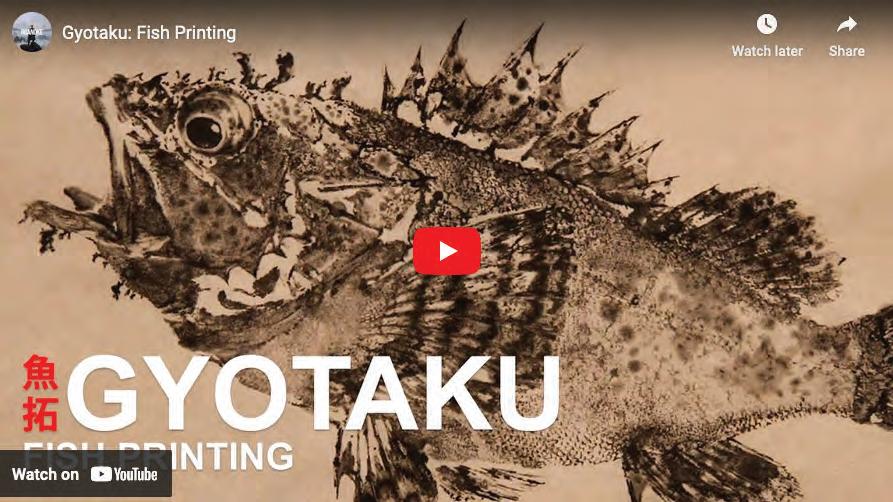
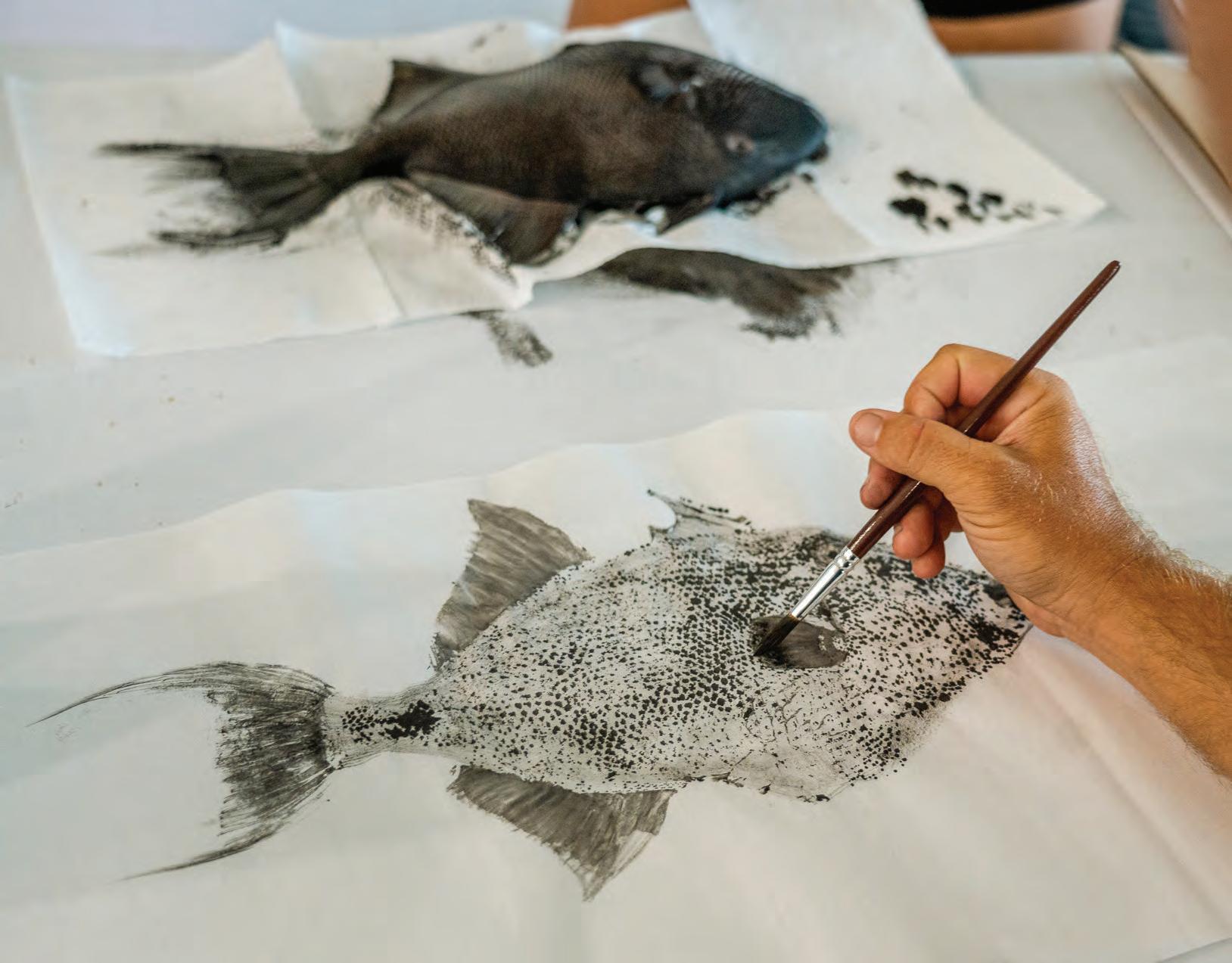
barriers to entry. What materials do you need? Where do you buy them? And how do you print your fish? Here at Iko Prints we did the heavy lifting with our slogan
“Just. Add. Fish” Our DIY gyotaku kit includes everything you need to print your catch, all you’ve got to do is catch a fish. The Japanese term “Iko” translates to “Let’s
go” resulting in our call to action “Let’s go - Print.”
Follow along as we show you how to print your own fish.


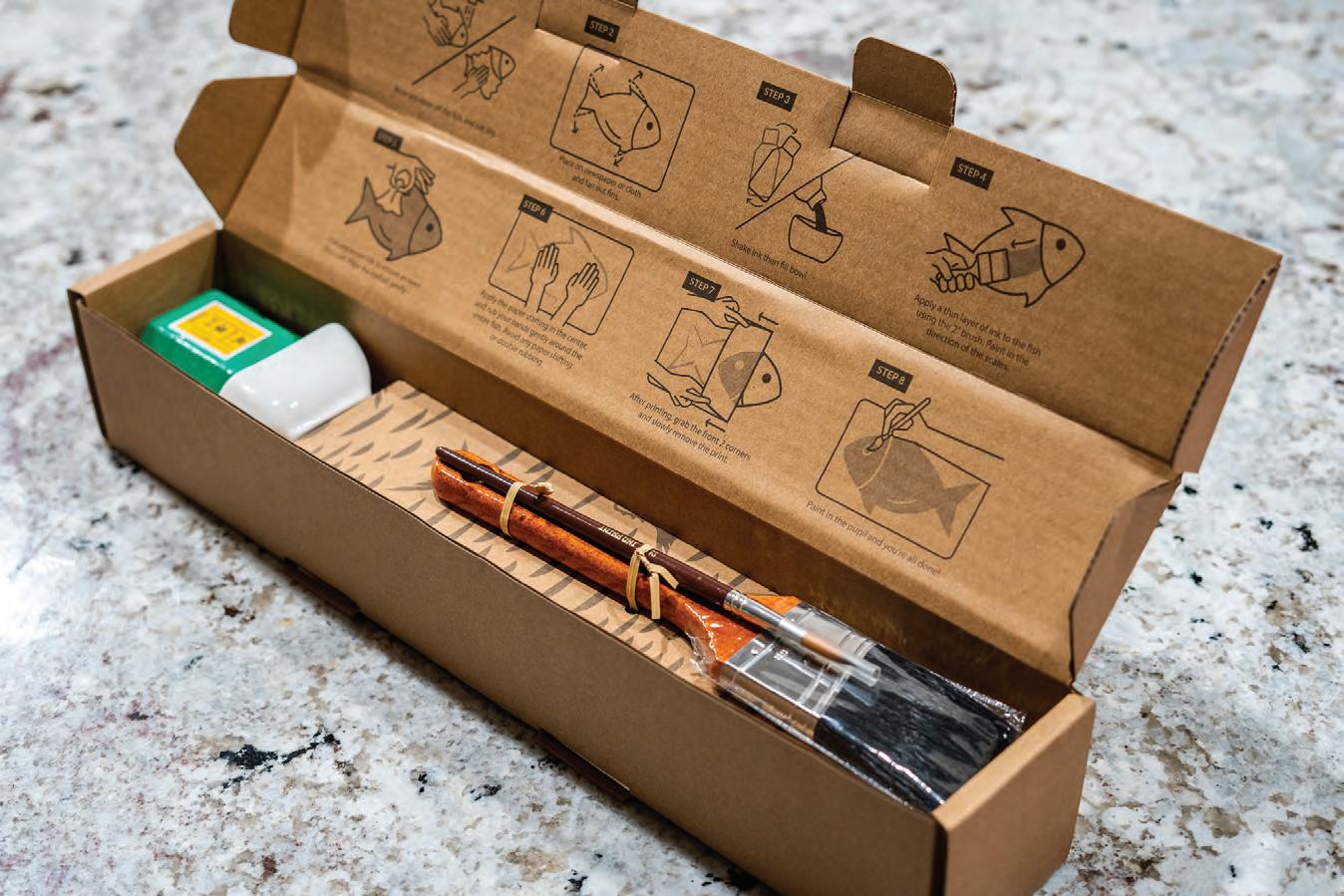









Suzuki Marine USA has joined forces with the National Marine Manufacturers Association (NMMA), local dignitaries and representatives of St. Andrews Marina in Panama City, Fla. to expand access to sustainable marine fuel for recreational boaters in the Florida panhandle.
During an event at St. Andrews Marina, it was announced that Hyperfuel Purfuels™, a new sustainable marine fuel, is now available at the marina fuel docks for recreational boaters with gasoline powered boats. This ethanol-free, highperformance 93-octane gasoline has the potential to reduce carbon emissions by 30 percent more than E10 gasoline at the same renewable content. Especially important, it achieves these advantages without compromising range or performance.
Suzuki Marine’s extensive use of sustainable fuel blends at its Panama City-based U.S. Technical Center and by Suzuki Motor Corporation in Japan has proven that blended sustainable fuels deliver the performance, fuel efficiency, reduced emissions and long-term engine reliability boaters demand. Suzuki Marine’s Technical Center will also use the fuel in day-to-day operations to its commitment to the NMMA Propelling Our Future initiative.
Suzuki has long been a proponent of sustainable marine fuels to reduce recreational boating emissions. Sustainable marine fuels, made from various feedstocks such as waste cooking oils, animal fats, plant-based materials
and other green refining methods can be used in America’s 12 million registered power boats without changes or modifications to the fuel system or engine. It is literally a “drop-in” solution that will work in all types of gasoline-powered boats, and the cumulative environmental impact - both immediate and long-term — is impressive.
“Sustainable fuels have incredible potential to reduce emissions and lower the environmental impact of recreational boating across the nation,” said Brandon Cerka, Suzuki Marine General Manager Sales & Marketing. “The key lies in making these fuels more accessible to the boating public at local marinas and fuel docks. For many months, we’ve been working with local fuel distributors SC Rowe, Hyperfuels, and St. Andrews Marina to make this possible. This is great day for boaters in the Florida panhandle. We’re hopeful this will help create a groundswell of interest across Florida and eventually nationwide.”
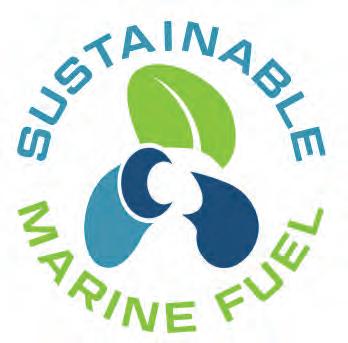
With its U.S. Technical Center established in the region, Panama City was an ideal location for Suzuki Marine to start this groundswell. Suzuki Marine worked with its partners to develop a plan to bring sustainable marine fuel to Florida boaters. The push would expand to city-owned marinas, then private marinas in northwest Florida and eventually to the entire state.

This effort exemplifies the best principles of “Kizuna” — a Japanese term for good relationships, friendship and close ties. Suzuki’s Technical Center worked diligently to lay the fundamental groundwork, creating a win-win-win situation that is good for the environment, good for the industry and good for boaters. It will be easy for marinas to provide this new fuel to their customers. It will blend with existing fuels, so there is no need to drain the tank dry before filling. In addition, no special fuel dispensers or pumps are required.
To learn more about Suzuki Marine and NMMA Propelling Our Future initiative, contact Suzuki Marine’s Tampa, Florida headquarters at (813) 687-7200 or visit www.suzukimarine.com.
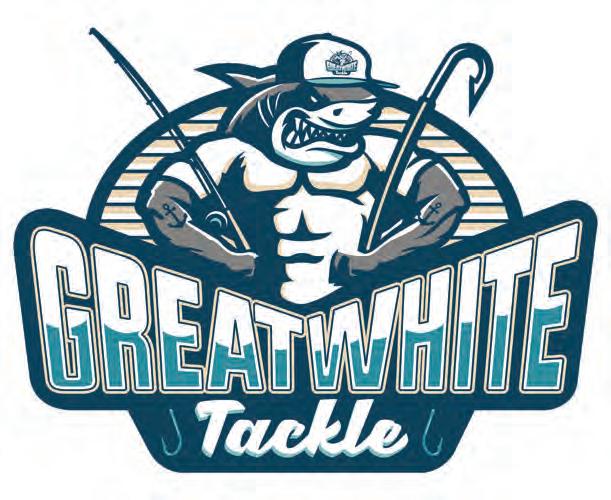
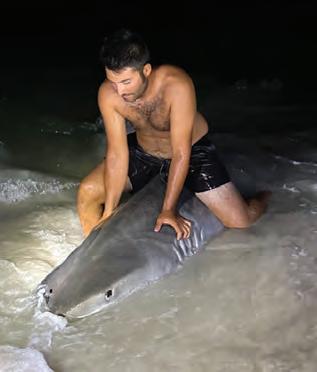
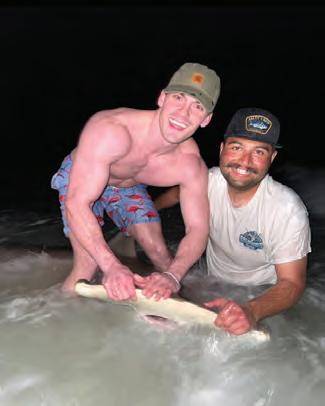


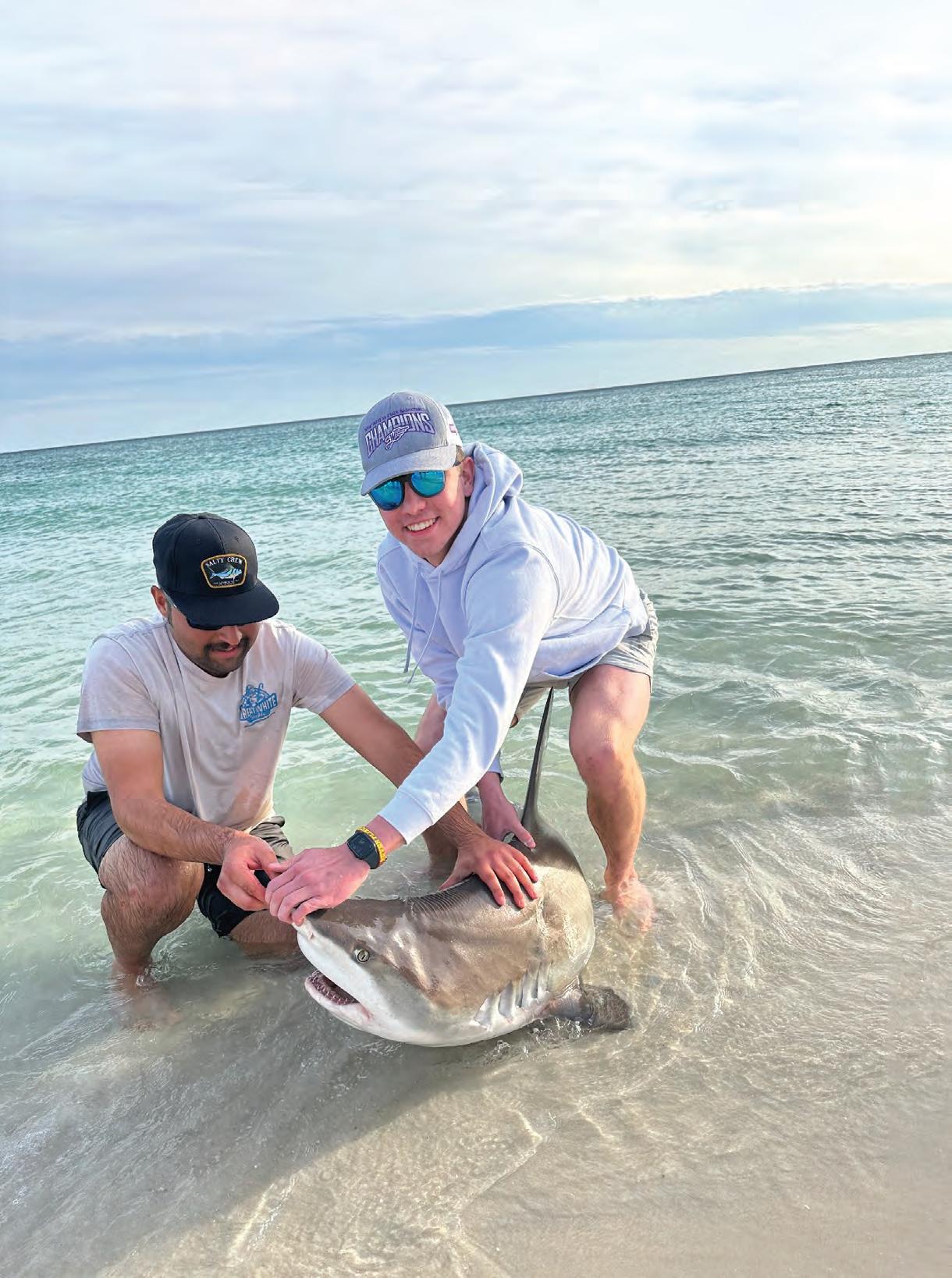

Great White Tackle Fishing Charters offers an exhilarating and unique fishing experience, particularly known for their shark fishing adventures. Based in Navarre, Florida, this charter service provides an opportunity to engage in land-based shark fishing, a thrilling activity that combines the beauty of the beach with the excitement of reeling in a big catch.
Imagine the pristine white sands of Navarre Beach stretching for miles, with crystal-clear waters gently lapping at the shore. The azure sky is adorned with fluffy white clouds, and a gentle breeze carries the salty tang of the ocean. This idyllic setting is the backdrop for an unforgettable shark fishing experience. As the sun begins to dip below the horizon, casting a warm golden glow over the landscape, the stage is set for an evening of adventure.
The experience begins with a short trek along the shoreline, accompanied by the soothing sound of the waves. Upon reaching the designated spot, the guides prepare the equipment, ensuring everything is in perfect working order for the night ahead. The anticipation builds as the fishermen eagerly await the first signs of activity in the water.
As darkness falls, the beach is illuminated by the soft glow of torches and lanterns, casting dancing shadows on the sand. The guides, seasoned experts in the art of shark fishing, share their knowledge of the local marine life and the techniques that will maximize the chances of a successful catch. The excitement peaks when the first shark is hooked, and the battle between man and beast begins.
Great White Tackle Fishing Charters offers a variety of trips to cater to different preferences and skill levels. Whether you’re a seasoned angler or a novice, there’s a trip for you. The 4-hour trips are particularly popular, providing ample time to
enjoy the thrill of the catch without being too exhausting. These trips are perfect for families, groups of friends, or solo adventurers looking for a unique experience.
One of the standout features of Great White Tackle Fishing Charters is their commitment to conservation. The guides emphasize the importance of sustainable fishing practices, ensuring that the sharks are handled with care and released back into the wild after being tagged. This not only contributes to the conservation of shark populations but also provides valuable data for marine biologists studying these magnificent creatures1.
Customer reviews highlight the friendly and knowledgeable guides, the well-maintained equipment, and the overall excitement of the experience. Many guests appreciate the opportunity to learn about shark behavior and marine conservation while enjoying a thrilling fishing adventure.

Tackle makes the best and strongest tackle in the market.
Great White Tackle specializes in some of the best custom tackle and gear that you can get on the market. Ranging from custom cobia jigs in all sizes and colors, as well as jig heads, custom boat gaffs and shark leaders. Great White Tackle also specializes in land based shark fishing in the panhandle for large migrating sharks that they tag and release for NOAA’s big predator
In summary, Great White Tackle Fishing Charters offers an unforgettable shark fishing experience in the beautiful setting of Navarre Beach. With a focus on conservation and education, this charter service provides a unique opportunity to connect with nature and enjoy the thrill of the catch. Whether you’re an experienced angler or a first-timer, Great White Tackle Fishing Charters promises an adventure that will leave you with lasting memories.
For more information, call 850-979-5555 or visit greatwhitetacklefishing.com.

Snook are a great inshore/near shore species to target. Their predator style bite and their world class fight make them truly worthy of the gamefish title, but catching a snook or targeting snook can be challenging. While there are countless fisheries that hold snook, narrowing down the best area is not an easy call. Given that snook season opens on Florida’s east coast September 1st here are a few tips that will pay off in planning a successful snook fishing trip; one that nearly ensures your success. First and foremost, where are you most likely to catch snook? That’s not a trick question. It’s the first question you should answer before planning your snook fishing expedition. My snook fishing efforts have led me to believe that the Jupiter Inlet on Florida’s East Coast is the most reliable estuary for easily accessible snook for beginners. My catch ratio over the many years that I have fished the Jupiter Fla. Inlet suggests that the primary species in and around this pristine inlet is snook. Day in day out, if you catch a fish in the Jupiter Inlet it will more than likely be a snook.
The next important question for a successful trip is what to use as a bait or lure? For the most predictable success I strongly recommend live bait. The bigger the better. Pilchards are my number one live bait, but croakers and pinfish work well too. Keeping
your live bait lively and healthy is a chapter in itself.

Changing your water regularly and adding aeration are key essentials to prolonging your bait’s life. There’s nothing worse than getting on top of the bite and discovering

your bait is dead. We’ve all done it, but don’t let it happen to you.
Next on the check list is tackle. You’ll want to scrap the light tackle approach
for Jupiter Inlet snook. Medium to heavy or you’ll invariably lose the big ones. I recommend a 20-pound braid with at least a 40-pound leader. Circle hooks are a good consideration if you’re experienced in using them. Nothing less than a #4. You better have a heavy-duty landing net too because some of these monsters just won’t fit into some of the more modest nets.
The next important question is the easiest to answer. Where in the Jupiter Inlet do I fish for snook with predictable results? Answer- just about anywhere! Obviously, docks are a great hiding place for snook, and night fishing will normally produce the best results around docks with lights or shadow lines. Flip a big pilchard under a dock light in Jupiter Inlet and watch what happens. You’re about to be tested because you’ve got to horse them away from the pilings or you’ll be kicking yourself for days. This is where the braid comes in handy. It’ll allow you to win that battle more often than not. But everybody loses that battle from time to time.
Seawalls are also a good source for targeting snook. They’re cruising the seawalls constantly so just be patient and let your live bait do all the work.
You can use live shrimp if that’s all you can get, but your species catch will not be predominantly snook. You’ll catch a fair amount of junk fish in Jupiter with live shrimp. I personally don’t want to confuse the effort with all that inferior action, and you don’t have to travel to Jupiter for that catch.



From boating and fishing to scalloping and wildlife encounters, Plantation on Crystal River is an ideal setting for travelers of all ages and interests to enjoy endless outdoor activities. To follow is just a sampling of the abundance of available outdoor pursuits.
BOATING: With more than 25,000 accessible acres of waterways, including Crystal River and Kings Bay, Plantation on Crystal River is a boater’s paradise. In addition to scenic river tours from Plantation Adventure Center & Dive Shop, kayaks, jon boats and pontoon boats can be rented by guests who want to explore on their own.
FISHING: With Central Florida fishing at its finest, Plantation on Crystal River is located alongside the Crystal River inlets and Kings Bay, just a short distance from local lakes and the Gulf of Mexico. Whether by land or by sea, anglers can cast a line for bass, grouper, snook, flounder, redfish and more. At the end of a successful day of fishing, Plantation’s chefs will be happy to prepare the fresh catch for the guest’s dining pleasure.


GOLF: Guests can tee off on the resort’s traditional Florida-style 18-hole championship course. Surrounded by native plants and oaks, the championship course challenges guests with a number of difficult fairways and waterways, including the course’s signature No. 11 hole. The Original Golf SchoolTM at Plantation on Crystal River accommodates players of all levels, with experienced professionals offering on-course instruction, with no more than four students per professional instructor.
SCALLOPING: There is no better place to go scalloping on Florida’s Gulf Coast than Plantation on Crystal River. Taking place in shallow waters, scalloping is a fun family activity that only requires a snorkel, net and a pair of fins; no previous experience is needed. Scalloping does require a special permit, but licensed group tours and charters are available
for those without a license. Scalloping season is typically July 1 to September 24.
Plantation on Crystal River’s Adventure Center & Dive Shop provides guests with a once-in-alifetime opportunity to swim and interact with threatened West Indian Manatees in the waters of Crystal River and Kings Bay. Snorkelers will find many of the gentle creatures in the crystalclear spring waters migrate during cooler winter months with some that stay year-round. The manatees can also be easily observed from any part of the Plantation’s expansive sea wall and gazebo point.
Countless on-property amenities also provide entertainment to guests at Plantation on Crystal River. Highlights include a scenic, lagoon-style swimming pool overlooking the river, sand volleyball court, horseshoes, shuffleboard, oversized outdoor chess and checkers and a regulation croquet court. Nearby attractions include Three Sister Springs State Park, Crystal River Archaeological State Park, Homosassa Springs State Wildlife Park, Coastal Heritage Museum, Weeki Wachee and the Yulee Sugar Mill Ruins State Park.
Transportation is convenient with nearby international airports, including Tampa International Airport only 70 miles away, and Orlando International airport just 90 miles away.
Plantation Resort on Crystal River offers unforgettable experiences for travelers of all ages and interests to enjoy endless outdoor activities. From boating and fishing to scalloping and wildlife encounters, visitors from around the globe travel to Florida's Nature Coast to enjoy all it has to offer. Reflect on the peaceful joy you'll feel swimming alongside a manatee and her baby, the rush of adrenaline after hooking an evasive gag grouper in the shallow waters of the Gulf...there are so many memories waiting for you here!
Guests will find a full-service resort with classic rooms, excellent dining, a lagoon-style pool, an Aveda spa, and a traditional golf course. Discover all there is to create your next great vacation memory.
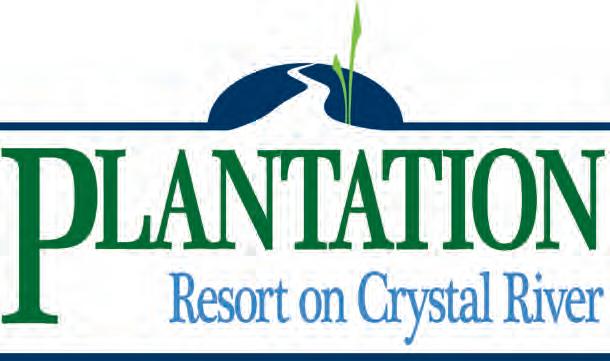



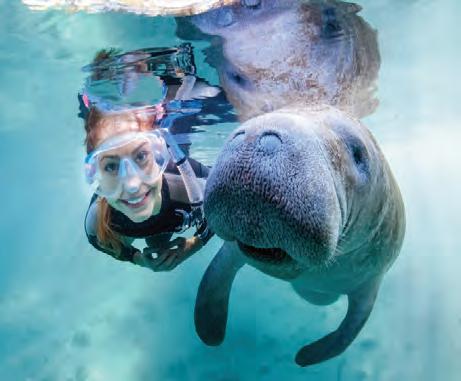






Scallop Season Is Here!!! (July 1 – Sept 24, 2024) DON’T MISS OUT! Book Your Trip Now! Our reservation team can help you make all the arrangements. We have the best guides that will take you out, which is the best way to ensure a great time on the water. We can also accommodate those do-ityourself folks with a boat ramp and seawall tie-ups if you bring your boat.



By Ben Martin, Editor in Chief
In an effort to better understand the recent FWC’s Atlantic Red Snapper Exempted Fishing Permit (EFP) Project we spoke with FWC’s Communications Manager, Michelle Kerr.
According to Ms. Kerr better data and management are clearly needed for Atlantic red snapper. Like many anglers, the FWC is also frustrated and concerned with the current management and state of the snapper grouper fisheries in the South Atlantic. For years, anglers have asked for ways to provide information about their fishing trips directly to FWC. As a result, FWC has developed three separate Exempted Fishing Permit (EFP) projects that may give recreational anglers opportunities to fish for (and keep) Atlantic red snapper outside of the one-day (July 12, 2024) federal recreational season to get better recreational data and test new, innovative management strategies aimed at reducing dead discards (fish caught alive but die after release). EFPs are permits that allow harvest for certain purposes otherwise prohibited under current federal regulations. Two projects will take place off northeast Florida, and one project will take place off southeast Florida.
The three EFP projects will occur simultaneously over 12 months
from August 2024 through July 2025.Specifically, the project duration will be broken up into 4, 3-month quarters in order to allow the most harvest opportunities for anglers along the east coast of Florida.
• Quarter 1: August 2024 to October 2024
• Quarter 2: November 2024 to January 2025
• Quarter 3: February 2025 to April 2025
• Quarter 4: May 2025 to July 2025
The application period for each quarter will open the month prior to the fishing quarter. The next application period for Quarter 2 will be open October 4- 14.
The FWC encourages anyone to apply, and they hope to collaborate with recreational anglers to collect better catch and discard data to improve the management of our snapper grouper fisheries!
For more information visit https://myfwc.com/fishing/saltwater/ recreational/atlantic-red-snapper-efp/?redirect=atlanticefp, or email FWC at AtlanticEFP@myfwc.com.




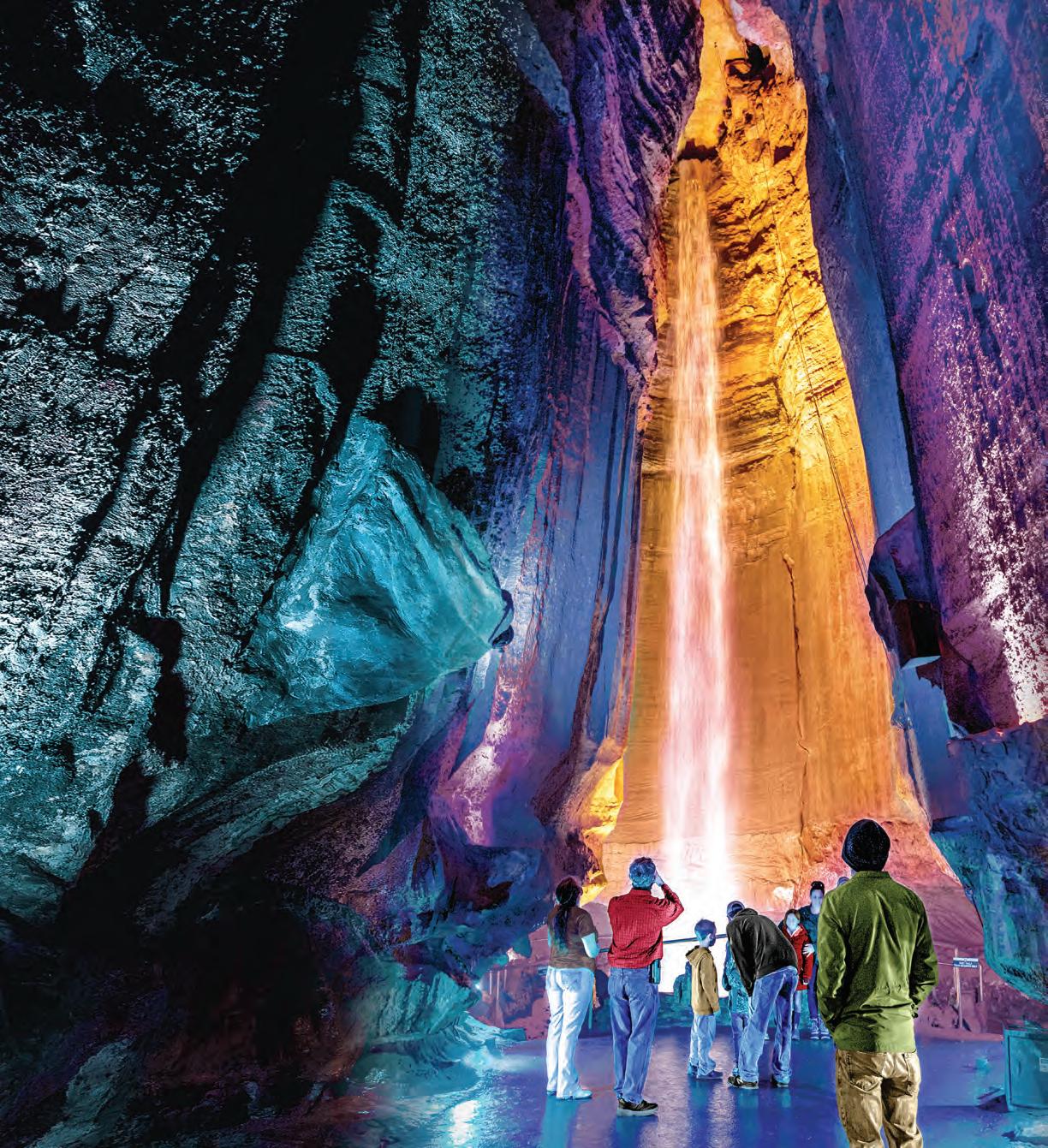




Forty-nine reservoirs stretch across the Tennessee Valley like a string of pearls. And for those who love to fish, those lakes are just as valuable. Whether it’s bass, crappie, walleye, or catfish, whether for sport, food, or just fun, you can find world-class lake fishing only hours away from any spot in the Tennessee Valley. From more than 11,000 miles of shoreline or while floating on more than 700,000 acres of water, residents and visitors will quickly learn why this area is considered one of the best fishing destinations in the U.S. and, some would say, the world.
Fishing from the shore can be restful and rewarding—and anyone can do it. All you need is a little intel about how to find a spot where the fish might be biting. Here are a few tips for successful shore fishing from the Tennessee Wildlife Resources Agency:
• Fish are often swimming near the shore in the spring and fall. If you’re fishing from the shore in the heat of summer, do it in the evening or early morning—or even after dark.
• Fish near-unique features such as docks, logs, trees, rocks, or rocky areas; aquatic vegetation; or places where creeks enter the water.
• When fishing in moving water, look at the surface for boils and breaks—this means there is some underwater structure blocking the current, which could be the perfect hiding place for fish.
• Begin fishing (casting) close and parallel to the bank, then work your way outward (fan casting) toward deeper water.
• If you don’t get any bites, try switching baits. If this doesn’t work, move to another hole.
• Wear polarized sunglasses so you’ll be able to see fish as well as submerged objects more clearly. (Your eyes will also be protected from the tackle.)
If you love outdoor sports—boating, hunting, fishing—and the natural world, or if you just like to observe wildlife, build birdhouses, maintain a bird feeder or are just curious about the critters in your backyard, the Tennessee Wildlife Resources Agency is here to help enrich your outdoor experience. Visit us at www.tn.gov/twra/




Chattanooga...a river runs through it.
Yes, the Tennessee River slices the city of Chattanooga—also known as the “Scenic City”—in half. With TVA’s Chickamauga Dam within the city limits, portions of Chickamauga and Nickajack Reservoirs are within a long cast of Downtown Chattanooga offering a combination of lake fishing upstream from the dam and riverine conditions downstream.
The varied ecosystem means that almost every warmwater fish species found in the Tennessee River can be caught alongside the popular Tennessee Aquarium or even in the shadow of historic Lookout Mountain. Let’s hit the fishing highlights.
Chickamauga Lake has evolved full circle in the last 40 years. Aquatic vegetation grew in large quantities in the 1970s creating a reservoir jam-packed with largemouth. Most were small, 5 lbs. or less, but they were plentiful. In the early ’90s, however. a mysterious die-off wiped out the vegetation, resulting in a crash in
By Capt. Richard Simms

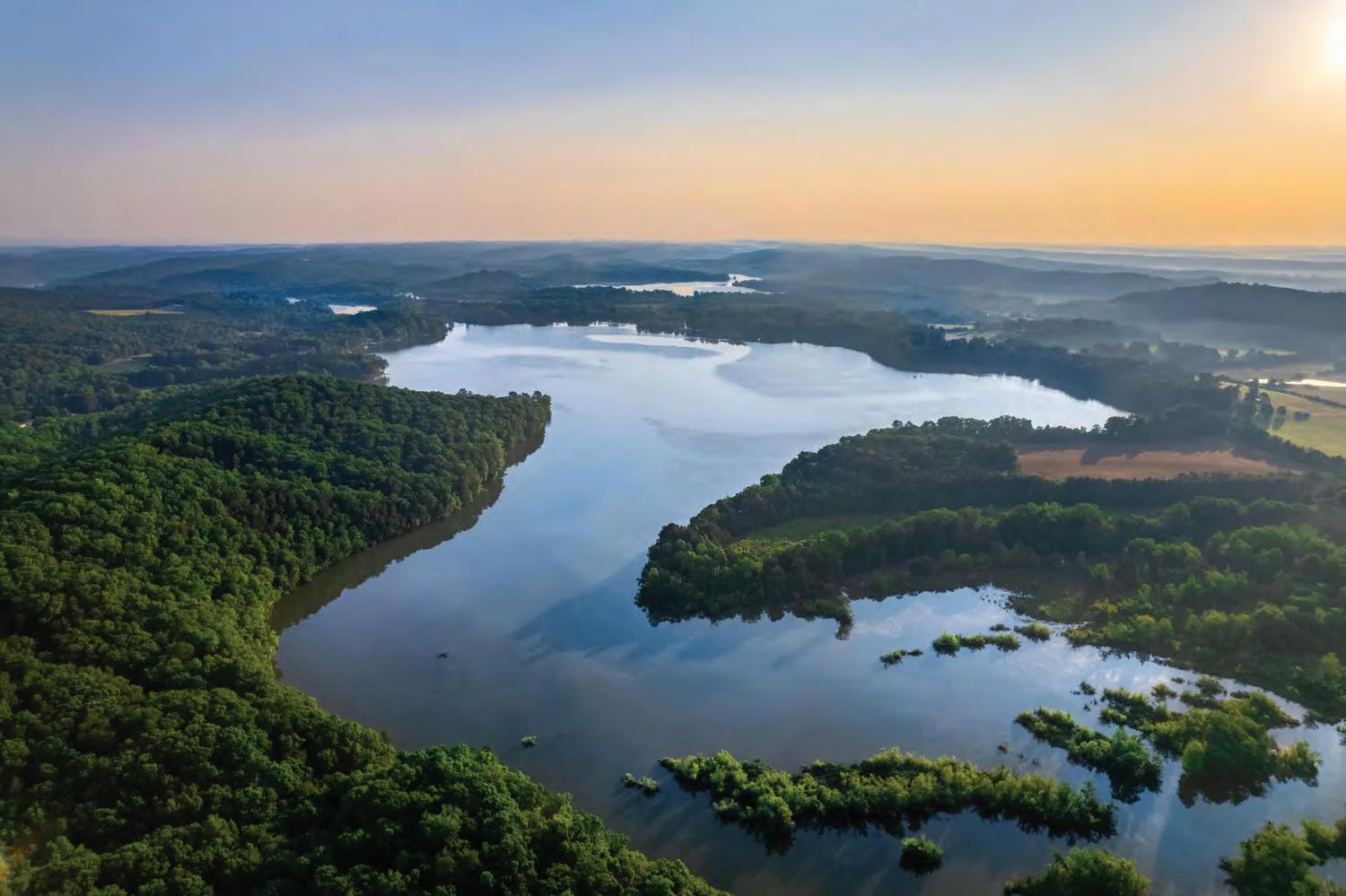


the largemouth population.
In the year 2000, the Tennessee Wildlife Resources Agency (TWRA) began an experimental stocking program, adding Florida-strain largemouth bass fingerlings annually to Chickamauga. It took ten years to see results, but those results were incredible. The numbers of double-digit bass have been shocking. The most rigorous and fast-growing are the hybrids between the Florida bass and the native, northern largemouth. One of those fish ultimately grew to be a new Tennessee State Record Largemouth, 15.3 lbs. caught by Gabe Keen in February 2015.
In recent years, Chickamauga has consistently been ranked among the country’s top largemouth lakes. There are numerous professional anglers who have moved here, making Chickamauga their “home lake.” That list is currently topped by Jacob Wheeler, 3-time MLF “Angler of the Year.” There has also been a proliferation of professional bass fishing guides who now call Chickamauga Lake their home.
Nine years ago, the Florida-bass stocking program was expanded to several other Tennessee lakes, although it is still too soon to tell if those results will mirror the great fishing in Chickamauga.
In spite of the number of restaurants that serve them, there was a time when anglers considered catfish a “trash fish.” Those days are done.
Anglers discovered that the Tennessee River is a virtual “catfish factory,” routinely

churning out huge blue cats in the 50-pound class and above. The numerous bridge abutments in downtown Chattanooga are just one of many places you might see anglers searching for trophy blues along with tasty channel catfish and occasional flatheads.
I bet many people reading this will be
shocked to see walleye on this list. Some may even question it. If so, they have probably never fished the headwaters of Chickamauga Lake (the tailwaters downstream from Watts Bar Dam, about 50 miles north of Chattanooga). While usually considered a “northern” fish, walleye are actually native to Tennessee in select locations. In fact, the world record walleye (25 lbs.) was caught in
Tennessee in 1960.
Walleye are first cousins to sauger, which were once plentiful in the Tennessee River. However, sauger went on a mysterious decline. TWRA fisheries biologist Mike Jolley and his peers decided to try stocking walleye to fill the niche left open by sauger. “Walleye live longer than sauger, they get bigger and they are easier to raise in hatcheries,” said Jolley. “We also hope they’ll offer more of a year-round fishing opportunity than sauger overall.”
In 2013 TWRA began stocking walleye fingerlings annually in Chickamauga Lake, downstream of Watts Bar Dam. It didn’t take long to start seeing results, although it took a while for southern anglers to figure out the best techniques for catching this “new-tous” species. Now, however, the word is out.
Capt. Scott Lillie cut his teeth as a youngster trolling for walleye up north. Now Capt. Lillie employs the trolling techniques he learned decades ago to fill live wells with walleye for his clients. His available winter
guide trips routinely book up a year in advance.
Those are the kind of reports that make Jolley proud. “It’s everything we hoped it would be and probably more,” said Jolley.
Chickamauga Lake has gained worldwide fame for its great bass fishing; however, the awesome crappie fishing remains a somewhat well-kept secret. The lake offers white and black crappie in outstanding numbers. Of course, late winter and spring is when most people concentrate on crappie. However, with a wide variety of shallow and deep-water habitat, those who know how can put slabs in the boat year-round.
Shooting docks and trolling crankbaits are the “go-to” summer patterns, but throughout the year you will see anglers using virtually any crappie fishing technique that exists. Personally, I love long-line trolling jigs beginning in late February through late April.
Those are some of the fishing highlights to be found in Southeast Tennessee. Of course we haven’t mentioned smallmouth bass, spotted bass, striped bass (rockfish), white bass, bluegill or shellcrackers. All offer outstanding fishing just out Chattanooga’s backdoor.
For the trout purists, a few local streams are stocked. However just about an hour’s drive to the east, the Hiwassee River provides remote, mountain trout fishing that rivals what you see in the classic movie, A River Runs Through It.
Regardless of what species you prefer to “target,” Chattanooga is the perfect place to take aim.
Capt. Richard Simms is the Editor of Crappie NOW Magazine as well as owner of Scenic City Fishing Charters. He is a former game warden for the Tennessee Wildlife Resources Agency before becoming a photographer and PR guy for TWRA. That led to a 30-year career as a broadcast journalist and freelance outdoor writer. Follow Capt. Simms on Facebook @sceniccityfishing.



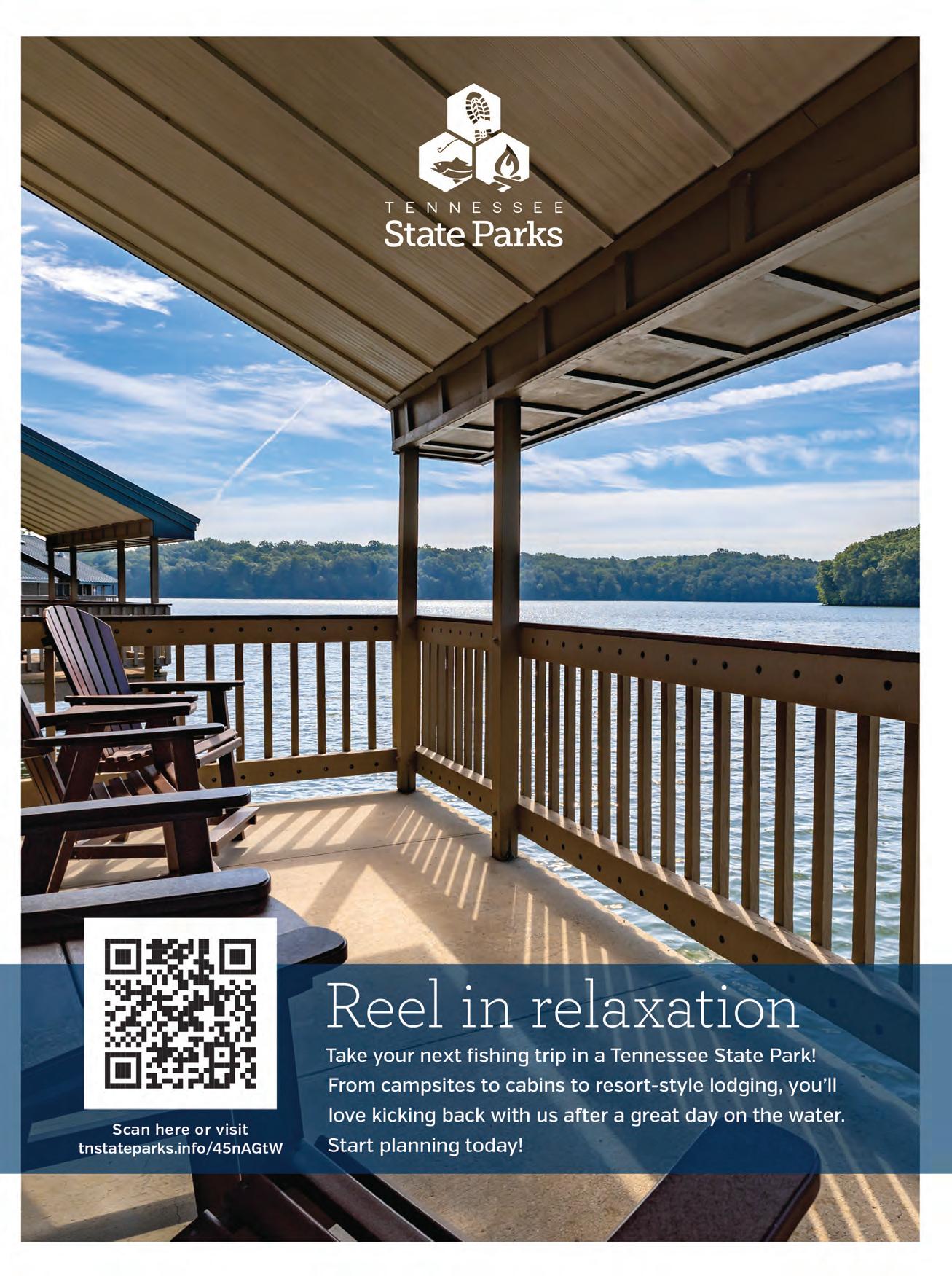

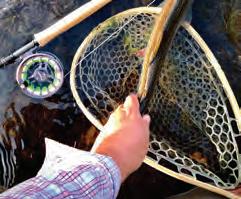
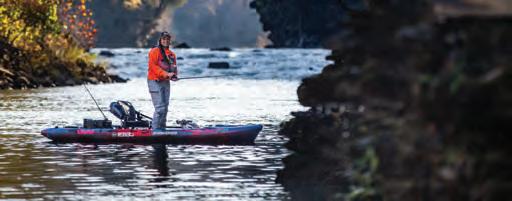
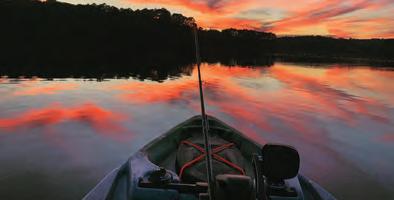
When it comes to freshwater fishing, Tennessee has an embarrassment of riches. From massive rivers and reservoirs to small ponds and high-elevation trout streams, the state is home to incredible fishing opportunities. Tennessee State Parks are excellent base camps for on-the-water adventures. They offer amenities for lodging or camping, and many of them are right on the water, with unparalleled access to some of the best fisheries in the nation.
Here are a few great Tennessee State Park fishing destinations:
• ROAN MOUNTAIN STATE PARK: Fed from elevations of around 6,000 feet, the Doe River runs clear and cold through the center of Roan Mountain State Park. Its tributaries are home to healthy year-round populations of native brook trout and both wild and stocked rainbows and browns.
The 2,000-acre park is dominated by hardwood forests and rugged ridgelines. It is a beautiful place to be, whether you’re casting flies or just camping and going for a hike.
• HARRISON BAY STATE PARK: Just outside of Chattanooga, Harrison Bay is a 1,200-acre park with 40 miles of shoreline on Chickamauga Lake. If you’re a bass angler, you know “The Chick’s” reputation as a big-bass factory. It is ranked among the best largemouth fisheries in the world.
The massive reservoir is also a great fishery for smallmouth bass, striped bass, crappie, walleye and big Tennessee River catfish.
• ROCK ISLAND STATE PARK: North of McMinnville, Rock Island is an 883-acre state park on the headwaters of Center Hill Lake, where the Caney Fork, Collins and Rocky rivers meet. These rivers and the lake itself are some of the best fisheries in this part of the world for “The Fish of 10,000 casts.” If the mighty muskellunge is on your hit list, this is a good place to chase one.
The park is also a fantastic place to catch walleye when the rivers fill up with spawning walleye in early spring. There’s plenty of bank space to fish from, and it’s a great area for kayaks, canoes and boats.
• NORRIS DAM STATE PARK: A short drive from Knoxville, Norris Dam State Park is 4,000 acres on Norris Lake. The lake is renowned for excellent smallmouth bass fishing as well as good fishing for largemouth bass, catfish, striped bass and walleye.
If that isn’t enough get you excited, the Clinch River downstream of Norris Dam is one of the best tailwater trout fisheries in the Southeast.
These four Tennessee State Parks are just the tip of the iceberg. With fishing as a primary draw to more than 40 state parks in the volunteer state, you’ll need to do some research to plan your next adventure. For information, visit tnstateparks.com.
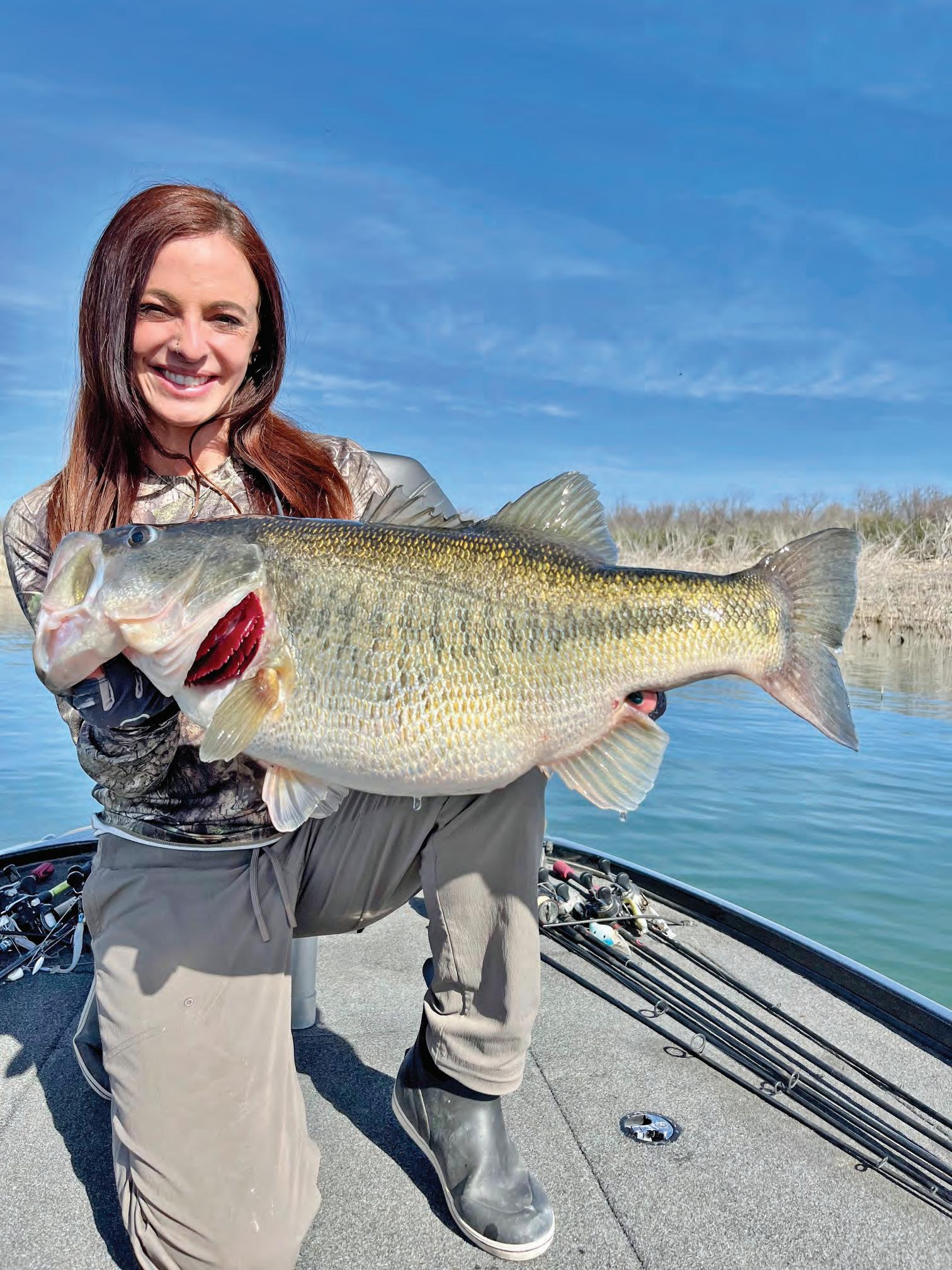
By Tracy Patterson

Tournament angler Lee Ann Powell recently set a new IGFA world record with a 10 lb. 3 oz. bass caught on 10 lb. test. She was fishing (for fun) with her friend and charter captain Dalton Smith on O.H. Ivie Lake in Texas when they noticed a school of fish on their livescope. Powell was using a Damiki jig with a 3 inch Fluke dipped in Spike It Chartreuse Cajun Dip N Glo. According Powell, “Once the big bass took the lure the exhausting fight to bring the monster bass to within netting
distance required me to constantly adjust and reset the drag with my record catch going deep each time it neared the boat.”
After finally netting it, Powell says they put the fish in the live well and headed out to find a set of certified scales to weigh it. The requirements for registering a potential world’s record fish are stringent and Powell says she almost missed her window/timeline for submitting her catch for authentication by the IGFA.

About the IGFA: The International Gamefish Association is a non-profit organization committed to the conservation of gamefish and the promotion of ethical angling practices through science, education, record keeping and recognition of outstanding accomplishments in the field of angling.
We salute the IGFA’s decision in January 2014 to create a separate category for female anglers, opening up thousands of categories for new World’s Record opportunities.


It’s going to be interesting to see where this one goes. On June 28, commercial herring fishermen won a case before the U.S. Supreme Court that upends the way federal agencies have regulated for 40 years.

The herring fishermen scored a victory over National Marine Fishery Service (NMFS) regulations, and the effects of the court’s ruling will be profound across federal agencies and industry. Basically, the Supreme Court ruled that the administrative state no longer has nearly unlimited power to interpret the same laws they administer.
In 2020, in twin Rhode Island and New Jersey cases, herring fishermen argued that the U.S. Congress did not give the NMFS authority to require the fishermen themselves to pay for governmentmandated observers on their vessels. The observers were intended to monitor fishermen’s catch and would have cost the fishermen more than $700 per day. Lower courts ruled in favor of the federal agency.
Those 2020 rulings relied on “Chevron doctrine,” which comes from a 1984 Supreme Court decision in Chevron v. Natural Resources Defense Council. For four decades since that ruling, “Chevron deference” has required courts to uphold a federal agency’s interpretation of statute, as long as it was “reasonable.”
Because of the lawsuit brought by herring fishermen, the Supreme Court, in a 6-3 decision on June 28, overruled the 1984 Chevron case

and rejected Chevron doctrine. Going forward it will be up to courts— rather than the administrative state—to interpret ambiguous laws. In his 35-page ruling, Chief Justice John Roberts called Chevron doctrine “fundamentally misguided.”
Only time will tell what this monumental ruling will mean for anglers. However, the courts will no longer be required to defer to regulative agencies that manage our fisheries when those agencies make rules based on their own interpretation of ambiguous law.


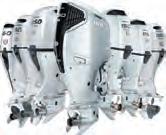


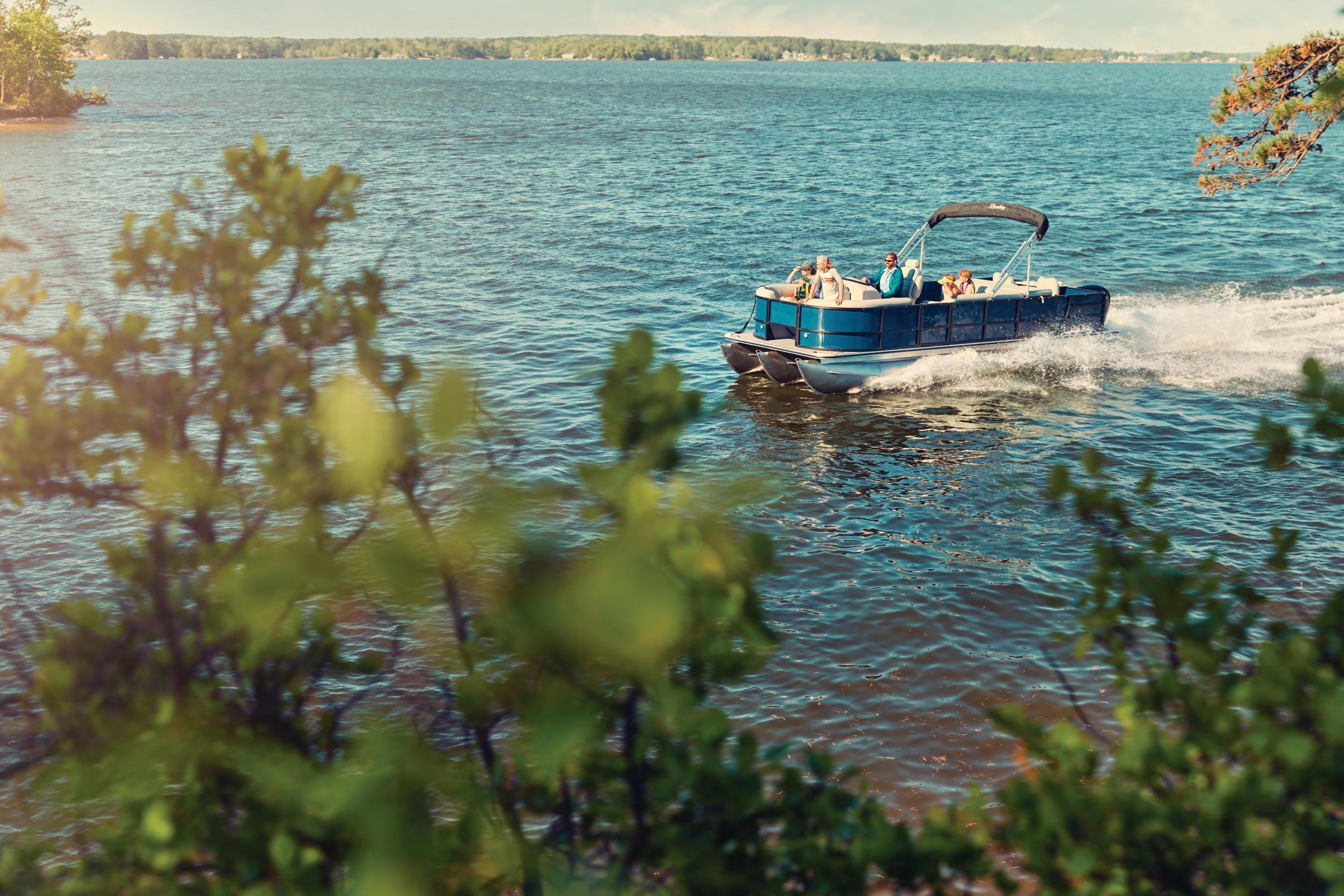

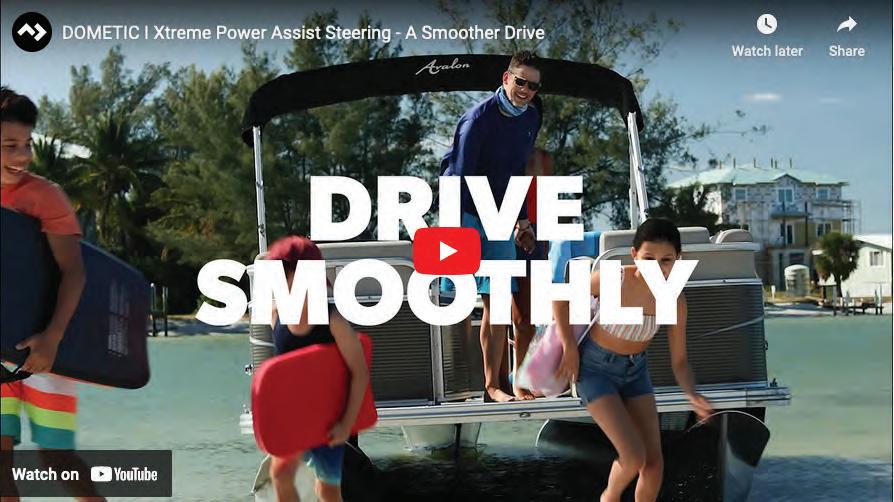


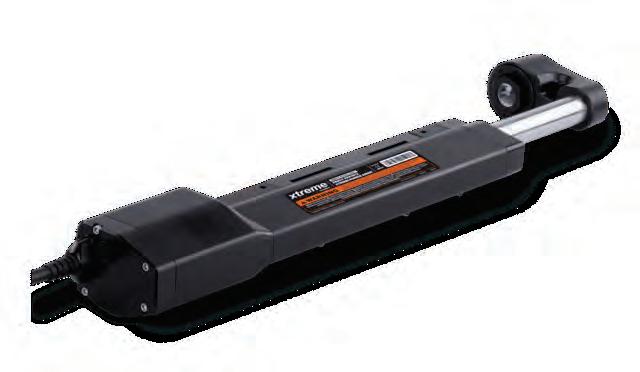
The Xtreme Power Assist Steering is engineered to bring the smooth, easy control of electric power-assisted steering to a wide range of popular boats, including pontoons, runabouts, RIBS, aluminum fishing boats and center consoles. This is an affordable, easy-to- install solution that offers a more enjoyable driving experience.
This system differs vastly from competitive “electric helm” systems on the market, because it does not increase the load on the mechanical
steering helm or cable. Once this system is installed, the mechanical steering cable now only turns the power assist unit, while the electric steering actuator actually turns the engine load. This ensures reliable long-term performance in real-world, on-the-water conditions.
• Significantly reduced steering effort provides a car-like driving experience for mechanically steered boats.
• Engineered to fit a wide range of single
• Integrates with any existing SeaStar rack or rotary cable steering system, so there is no need to install new steering to take advantage of this new technology.
• Designed as a self-contained, plug-andplay system which easily mounts to all major outboard brands and integrates with the boat’s existing mechanical steering in less than 1 hour.
• Built in Fail-safe System automatically reverts to mechanical steering in the event of a system failure.
As the sun rises, the anticipation of a day on the water fills the air. Rods, tackle, and bait are loaded onto the boat, and the thrill of catching fish beckons. But where should we go? Before we rush off, let’s explore our options.
If we’re going to be fishing close to the shoreline a few quick considerations will make for a more productive trip. Fish tend to congregate near structures that offer both food and protection. Docks, wrecks, rip rap, pilings, and artificial reefs create ideal habitats. However, these popular spots often suffer from overfishing, becoming less productive over time.
When the usual spots disappoint, consider rocky expanses known as “hard bottoms.” These rugged underwater landscapes provide excellent fishing opportunities. Even spear gun-toting divers appreciate their allure.
Beyond the basics, geographical opportunities present themselves throughout the Gulf of Mexico where vast and diverse bottoms offers more than meets the eye. Natural formations, shaped by tectonic movements or volcanic activity, play a crucial role. Concentrations of fishable populations can be sparse, akin to
desert patches in the ocean. But structure in these areas remains key.
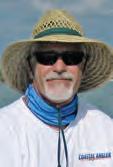
The Desoto Canyon and “The Nipple” in the Gulf’s Desoto Canyon were formed by

tectonic slip faults that plunge to uncommon depths. “The Nipple” is an intriguing part of this underwater landscape near Destin, Fla. and remains a hotspot. Some speculate that
its deep waters may also contribute to the area’s shark activity.
Shipwrecks are silent havens. Shipwrecks, scattered across varying depths, serve as thriving habitats. The skeletal remains of old vessels attract big game fish like amberjacks and Goliath groupers. These submerged relics hold secrets and promise exciting encounters.
Monoliths are underwater treasures. These underwater hills are jagged, solitary, and teeming with life. Monolithic structures encourage nutrient-rich currents to rise from the depths, attracting baitfish. Predators patrol these underwater oases, seeking smaller prey. Don’t overlook them. Your sonar may reveal hidden fishing gems. The Middle Grounds are a prime example: Located 100 miles NNW, the Middle Grounds exemplify monolithic fishing grounds. Here, the ocean’s secrets unfold, and every sounder blip could lead to a memorable catch.
In the vast expanse of saltwater, understanding these geological nuances can transform a fishing trip into an unforgettable adventure. So, load up your gear, set sail, and explore the mysteries beyond the shoreline!
Capt. Russ Walker is a USCG Masters licensed fishing guide and owner of Tide Walker Charters out of Cape Coral, FL. www.tidewalkercharters.com (239) 994-7818


You got new charts! Explore the ocean with vibrant terrain & depth shading, using all-new TZ MAPS. Don’t just take our word for it. See for yourself. Scan here, and we’ll show you!

By Capt. Quinlyn Haddon
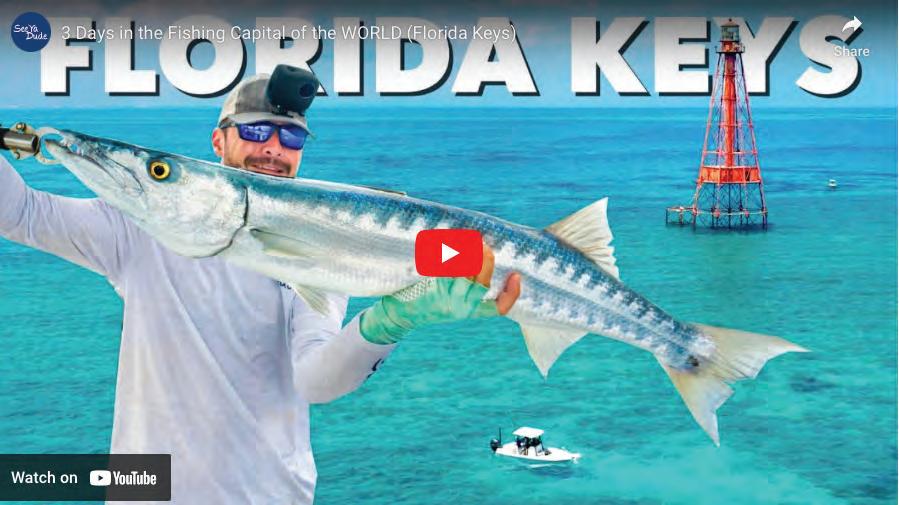
September’s fishery in the Florida Keys can be unpredictable as we transition into autumn at the end of the month. Cooler northern waters will begin to push fish back into their southern migration, while we maintain our usual summer species.
It’s always a sweeter deal running offshore when the mahi are still around, giving more opportunities to diversify the fish box. They will begin to phase out throughout the next several weeks, making this month the last month of the year to reliably target them.
Swordfish and blackfin tuna are also excellent fuel-burn justifications this month. With fewer boats on the water, the traffic at the Marathon humps will be less chaotic for targeting tuna.
The reef fishing is always a good option. The snappers are snapping year-round and seasonal harvest for black and red grouper are still open.

This is a great opportunity to dive for lobster as well, as the water will still be warm, but the excitement over opening season has died down. The beginning of lobster season can turn our waters into an absolute zoo. It’s unnerving to even suggest going out during that time and throwing yourself in the mix of that mayhem. That hype seems to gravitate mostly towards the
July and the first few weeks in August.
Each year when the kids are back in school, the Florida Keys takes a massive hit on tourism. We will experience the slowest time of the year over the next few months.
Although this may be a difficult time for working locals, it’s something to be enjoyed by our visitors. The prices of accommodations will be as low as they get, restaurants will have ample
seating, service will be quick, and best of all, no traffic!
The flurry of summer boaters trailering their rigs down from all over the country will have stopped, making both road and water traffic much more pleasant. The fishery will experience less pressure, creating a mecca of hungry fish, for those who are able to get out there.
Being in the middle of hurricane season likely has a bit to do with the empty charter calendars this month. However, it’s a great time to make an impromptu trip, knowing you won’t have a problem finding cheaper accommodations and availability for fishing charters.
Hurricane season may seem daunting, but there is more than enough notice ahead of any major storm. Locals are always diligently watching the weather for the first sign of any potential disturbance and will be able to help you make decisions when booking last minute trips. While September maybe be our slow season for tourism, that does not apply to our fishery. Come take advantage of having paradise all to yourself.
Capt. Quinlyn Haddon guides with Sweet E’Nuf Charters based out of Marathon, Florida Keys. www.captainquinlyn.com; IG: @captainquinlyn

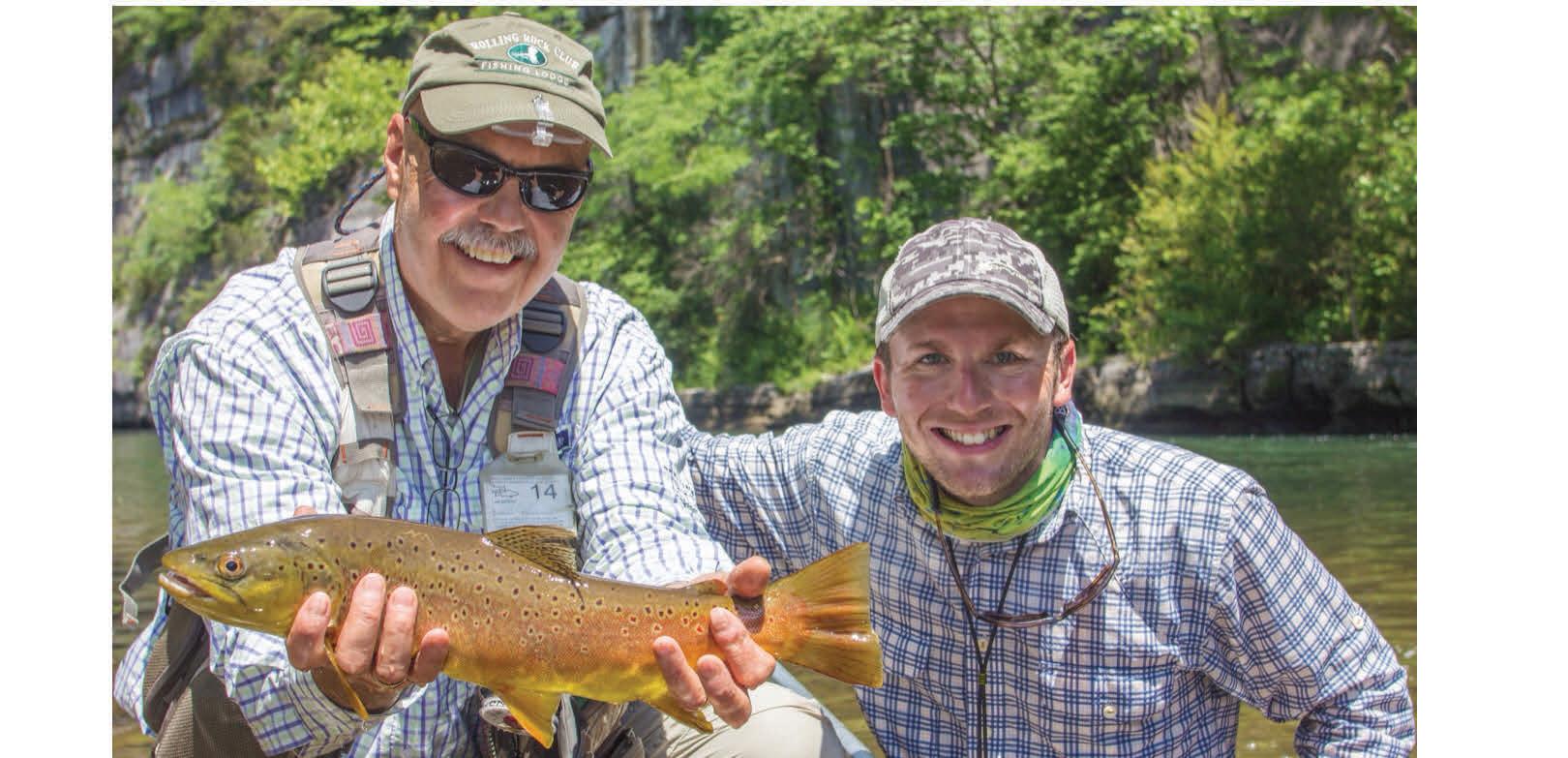







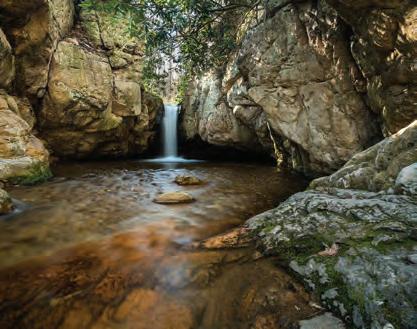

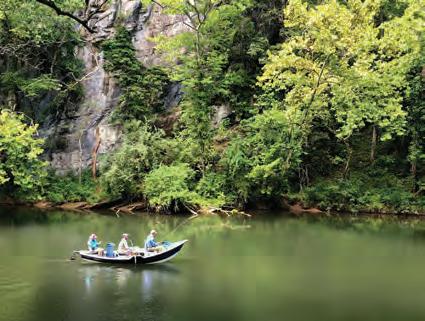








By Phillip Wolf
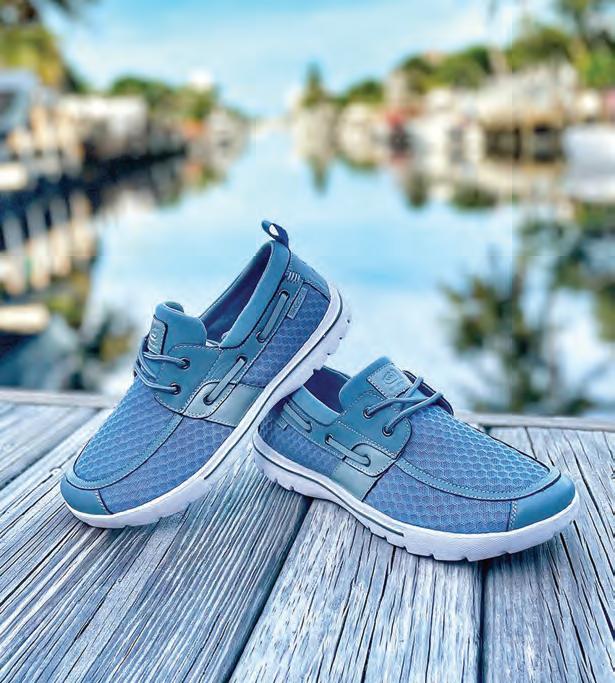
As a lifelong fisherman, I have tried and worn just about every type of boating shoe in the market. From flip-flops to sneakers and most of all, the big-name brands of deck shoes. Recently I attended ICAST in Orlando, the fishing industry’s annual convention where all things for fishing are on display for all attendees to view, and I found a company who claimed to have the best deck shoes ever made. I was surprised when the owner, Ted Alfen asked me to sit down and try a pair on. Wow, I am glad I did. After a brief walk around his booth and near the isle way, I decided to purchase them and give them a try.
These deck shoes are by far the most comfortable and lightest boat shoes I have ever worn. The tremendous support of the removable inner sole is unlike most others in today’s market. They are also available in wide widths for those big flat feet like mine. They have fast drying, breathable mesh material and non-marking white soles with special slip resistant tread. The materials used to create these are anti-microbial and made to be odor resistant, mostly due to their quick drying design. They have many styles, colors and designs to meet most anglers’ needs, so do yourself a favor and try a pair. The Del Marina deck shoe from Skuze Shoes is top shelf!

Visit Skuze Shoes in Pompano Beach, Fla. or check out their website at www.SkuzeShoes.com or email them at info@SkuzeShoes.com and tell them you read about their great shoes in Coastal Angler Magazine. Use promo code ANGLER20 for 20% off your purchase at skuzeshoes.com.


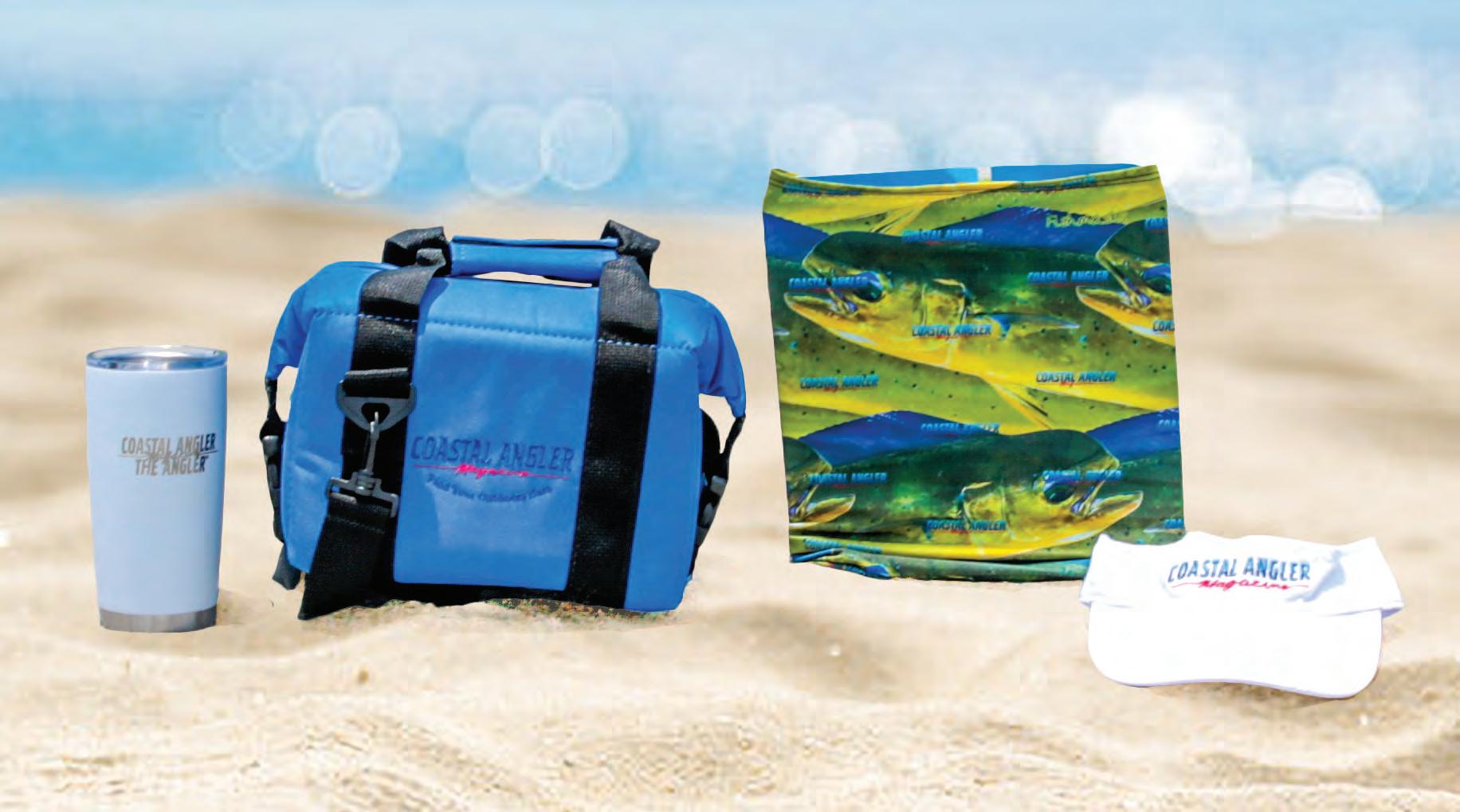
20oz. Ice Retention Slide Mug, AO Cooler, SPF 50 Fish Mask, And A Visor!
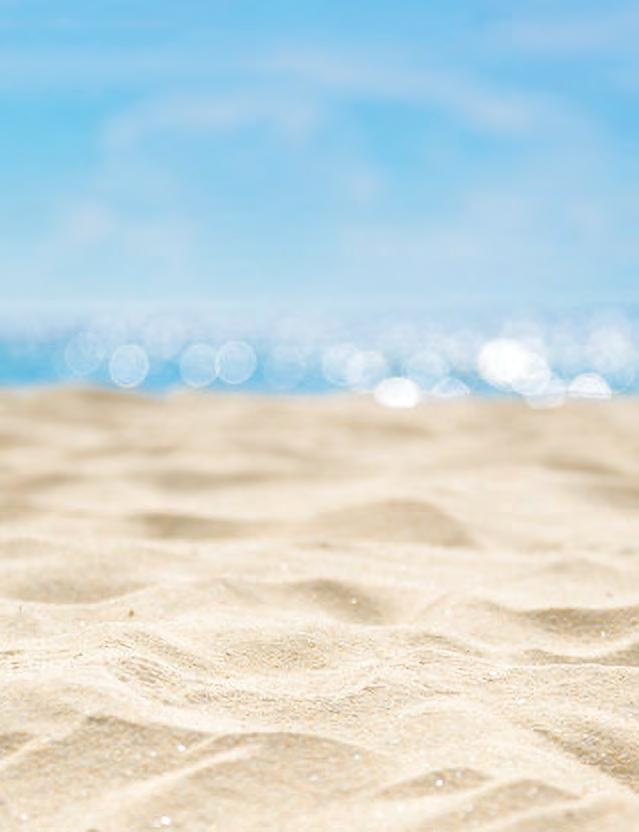




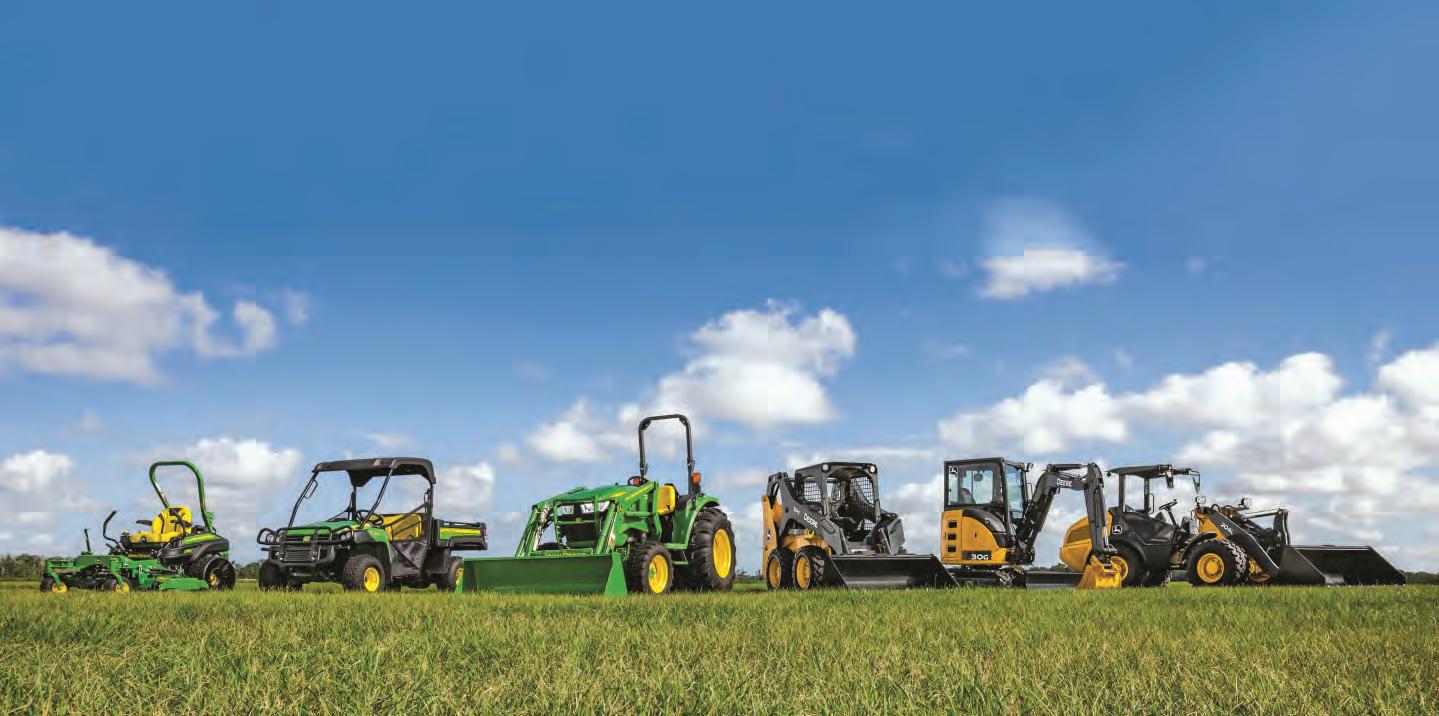




e have all uttered this phrase more than once if fishing is our passion:
“One more cast!” Seldom is this taken literally, but it’s a gesture of winding down the day with high hopes of landing just one more fish. This reminds me of a particular trip I had with my two boys, where I wanted to try one more spot with hopes of salvaging an otherwise slow day of catching.
During September, the fish have every type of forage available and can eat at will; for that reason, it makes sense to use live bait over lures, especially in the afternoon. It was about 3:00 PM, and my boys were ready to head home and stop at our favorite island burger joint. It wasn’t easy to convince them to stay, but my persistence prevailed as I explained my plan. I showed them how to study the satellite overlay on my Simrad and found an area with some old meandering channels that led to a dead end, resembling a neighborhood cul-de-sac surrounded by glass
By Capt. Michael Okruhlik
flats and potholes. This would be a great place for reds to corner and ambush an easy meal.
We slowly eased into the cul-de-sac and positioned the boat so we could cast with the light breeze at our backs, making it easy to place our shrimp at the edge of the sea grass and sand border. We had been fishing an area where a Carolina rig with a live shrimp appeared to be our best method, so we continued that process here. After some time had passed, I switched my youngest son over to a popping cork, primarily to keep him active and interested. On his first cast, he caught a nice red. His 2nd, 3rd, and 5th casts all accounted for slot-sized reds! My oldest still didn’t have a bite. I was trying to switch another rod over to a popping cork since the second fish, but between tying knots and landing fish, it took me a while. Finally, I handed him a rod with the cork, and he started landing reds of his own.
Thankfully, I switched the presentation. Had
I not switched, we might not have caught a fish all day. But here’s the kicker: the water was about two feet deep, clear, and the live shrimp was sitting on the bottom with both the Carolina rig and the cork. Logically, both methods should have worked, but they didn’t. Maybe it was that little pop off the bottom created by the cork. While fishing, if the bite is not there, always change something up, even if it has worked 100 times in the past. Often, it can be the little things that make a difference, even if we can’t figure out why. Also, never forget: one more cast, and take a kid fishing!
Capt. Michael Okruhlik is the inventor of Knockin Tail Lures®, and the owner of www.MyCoastOutdoors.com.








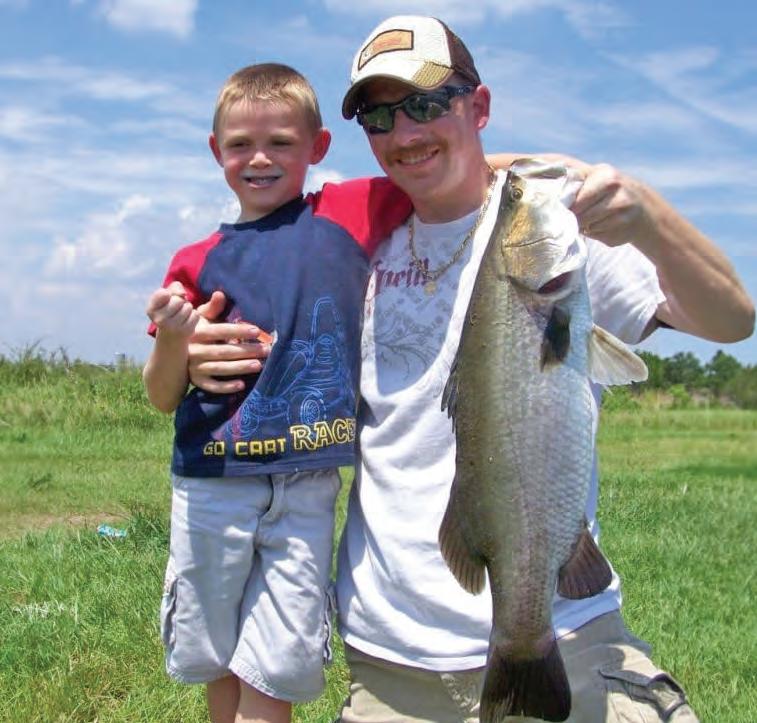

If you’re an avid angler seeking a one-of-a-kind fishing adventure, look no further than Osceola Outback Adventures. Located in Central Florida, just 45 minutes from the Orlando airport, Disney, and other attractions, this full-time guide service offers some of the Sunshine State’s most unique fishing experiences.
At Osceola Outback, you can embark on an unforgettable barramundi fishing expedition. What makes this experience truly special? Well, Osceola Outback is the first and only Barramundi guide service in North America. Native to Australia and weighing as much as 100 pounds, barramundi are hard-hitting, drag-screaming fighters that love to leap out of the water to display their power. The property is a working farm, ensuring that no angler goes home without hooking up multiple times. It’s a rare opportunity to catch these impressive fish!
Florida is a go-to state for bowfishing, thanks to its warm climate and abundant “non-game” fish. Osceola Outback offers both daytime and nighttime bowfishing trips. You’ll have the chance to shoot tilapia, gar, bowfin, and catfish in the state’s extensive network of lakes, ponds, and rivers.
Airboat Bass Fishing: Explore Uncharted Waters
For an adrenaline-pumping experience, try airboat bass

fishing. Osceola Outback’s custom-built airboats are equipped with 8-foot Blade Power-poles, trolling motors, and full walkaround fishing decks. With seating for three anglers and 500-horsepower motors, these boats can take you to places you’ve never explored before. It’s common for two anglers to land 60+ bass in a single 4-hour trip. Keep an eye out for alligators, wading birds, and birds of prey!
Known worldwide for huge stringers of largemouth bass, the Kissimmee Chain of Lakes offers fantastic fishing opportunities. Osceola Outback provides fully rigged bass boats, and their captains are United States Coast Guard certified and licensed. You can choose between fishing with artificial lures or locally caught live wild shiners.
Here’s something truly unique: Osceola Outback is the only place in the world where anglers can land an International Inshore Slam. This prestigious achievement consists of catching barramundi, peacock bass, and largemouth bass all in one location. With barramundi native to Australia and weighing up to 100 pounds, this is an angler’s dream come true.
Whether you’re a seasoned angler or a first-timer, Osceola Outback Adventures promises unforgettable fishing experiences. So grab your gear, cast your line, and get ready for an adventure like no other!








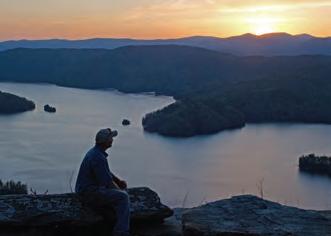








You don’t need an invitation to have fun in Upcountry South Carolina: Come kayak crys-tal blue lakes, hike to rushing waterfalls, dig into local cuisine, attend family oriented events and breathe fresh mountain air. But when you hold a South Carolina fishing license, it feels like an official ticket to enjoy the great outdoors.
Fish bite year-round in the lakes, rivers and streams of Upcountry South Carolina, which is located in the state’s northwest corner in the foothills of the Blue Ridge Mountains. Devils Fork State Park in Salem is a great place to access Lake Jocassee, which holds state records for rainbow trout, brown trout, redeye bass, smallmouth bass, spotted bass and yellow perch. Or try your luck at Lake Hartwell, at Lake Hartwell State Park in Fair Play and Sadlers Creek State Park in Anderson, three-time host of the Bassmaster Classic.
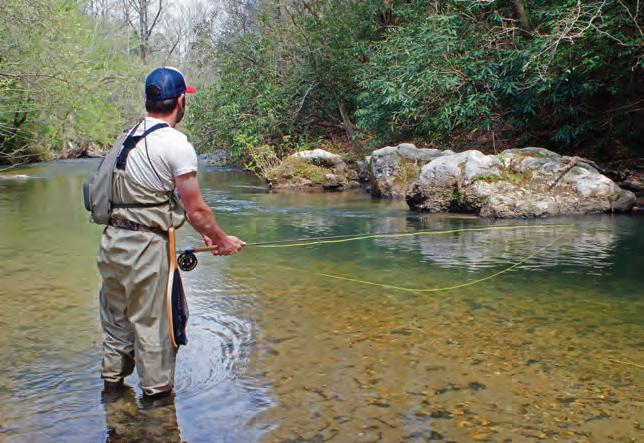

The Chattooga River boasts healthy wild trout populations and is also regularly stocked by Oconee County’s Walhalla State Fish Hatchery. The Whitewater River above Lower White-water Falls is another great option for wild trout. Lake Keowee, at Keowee-Toxaway State Park in Pickens County, swims with largemouth, smallmouth and spotted bass, crappie, bluegill, yel-low perch, catfish, brown and rainbow trout.
Pick up everything you need—including advice— at local fly shops or book a guided fish-ing trip. Sam Jones, of Jocassee Charters, puts anglers on trophy trout. Buster Green’s Guide Ser-vice reels in stripers, hybrids and bass on Hartwell and Keowee. Chattooga
River Fly Shop leads fly fishing trips on the Chattooga and Chauga rivers.
Even if you don’t fish, you can still get on the water. Jocassee Lake Tours offers tours of the lake and of Jocassee Gorges, which National Geographic called a “destination of a Lifetime.” Some amazing spots can only be reached by boat. Several tours are offered, so you can learn from a naturalist while riding on a pontoon or paddle a kayak through coves and under waterfalls.
Prefer to captain your own boat? There are several rental companies, including Tri-County Boat Rental, on Keowee, Jocassee, Hartwell and other lakes.
If you’d rather be under the water, Jocassee is a world-renowned freshwater diving desti-nation that boasts visibility of more than 50 feet at depth. Lake Jocassee Dive Shop offers lessons and guided trips to see “The Wall,” where a section of mountain was blasted to build the dam, or a 40-foot swim-through wooden sailboat.
From fishing to boating, hiking to camping, biking to bird watching and more, the Up-country’s state parks are a great place to play. Dip into the swimming hole at Oconee State Park. Hike to the tops of Pinnacle and Table Rock mountains at Table Rock State Park. Explore the 13,000-acre Mountain Bridge Wilderness Area at Caesars Head State Park. Or create your own adventure at any of the Upcountry’s 13 state parks.
UpcountrySC.com to learn more.





argemouth bass in Florida will now have a new name. This new designation may also affect bass in Georgia, North Carolina and South Carolina as well. They are now designated as “Florida bass.” We’re sure our buddies in Georgia, North Carolina and South Carolina are going to love that, but a recent study by researchers at Yale University using genetic analysis determined that Florida bass are their own distinct species. The scientific name for Florida bass is Micropterus Salmiodes while the scientific name for largemouth bass will now be
Anglers have long suspected that bass in Florida grow faster and bigger and now the genetic research confirms that theory. How this new designation will affect the bass
tournament circuit and regulations remains to be seen.
According to Michelle Kerr, spokesperson for the Florida Fish and Wildlife Conservation Commission, “Genetics research gave us a clearer picture of what many anglers and biologists have long suspected: Florida bass are truly unique. Recognized now as a distinct species from the largemouth bass, this new classification not only celebrates Florida bass as a symbol of our state’s freshwater legacy but will also enhance our efforts in conservation and management.”
Given that Florida hatcheries have long been a premium source for stocking and restocking bass estuaries throughout the world, the new designation could have ramifications beyond the Carolinas and Georgia. Regardless of what the future for bass nomenclatures holds in store, our hats go off to the astute researchers at Yale University for providing proof of what many anglers have suspected for years.



By CAM Staff
ona, located on the western coast of Hawaii’s Big Island, is renowned as one of the world’s premier fishing destinations. With its calm waters, diverse marine life, and rich fishing history, Kona offers anglers of all skill levels an unparalleled fishing experience.
Kona’s fishing legacy dates back centuries, rooted in the ancient practices of native Hawaiians. These early inhabitants relied on the ocean’s bounty for sustenance, developing advanced fishing techniques that have been passed down through generations. Today, this tradition continues as modern anglers flock to Kona, drawn by the promise of adventure and the chance to catch some of the ocean’s most prized species.
One of the key factors that make Kona such a fantastic fishing destination is the unique geography of the area. The island’s coastline drops off quickly into deep waters, allowing fishermen to access some of the world’s best fishing spots just a few miles from shore. The deep-sea trenches and underwater mountains surrounding the island create




a perfect habitat for a wide variety of fish species.
Kona’s calm waters are another major draw for anglers. The region’s leeward position shields it from the strong trade winds that affect other parts of the Hawaiian Islands, resulting in relatively flat seas. This makes for comfortable fishing conditions, even when venturing far offshore.
Kona is famous for its big game fishing, with the Pacific blue marlin being the most coveted catch. These majestic fish, known locally as “Kona marlin,” can grow to over 1,000 pounds, earning them the nickname “grander.” The thrill of hooking a marlin is an experience that many anglers dream of, and Kona’s waters are among the best in the world for making that dream a reality.
In addition to marlin, Kona is home to a wide variety of

other game fish, including yellowfin tuna (known as “ahi”), wahoo (or “ono”), mahimahi, and spearfish. Each species offers its own unique challenges and rewards, making Kona an exciting destination for anglers looking to test their skills against some of the ocean’s most formidable opponents.
For those new to fishing in Kona or for experienced anglers looking to maximize their chances of success, hiring a local fishing charter is highly recommended. Kona boasts a fleet of experienced captains and crews who know the local waters intimately. These charters offer a range of services, from half-day trips to multi-day excursions, and cater to all skill levels.
Fishing techniques in Kona vary depending on the target species and the time of year. Trolling with lures or live bait is a popular method for catching marlin and other pelagic species. For those interested in a more hands-on experience, bottom fishing for snapper and grouper is also available.
Kona’s fishing community is deeply committed to sustainable fishing practices. Many charters participate in catch-and-release programs for marlin and other large species to ensure that future generations of anglers can continue to enjoy the thrill of big game fishing. Additionally, there are strict regulations in place to protect the local marine ecosystem, including limits on the number and size of certain species that can be harvested.
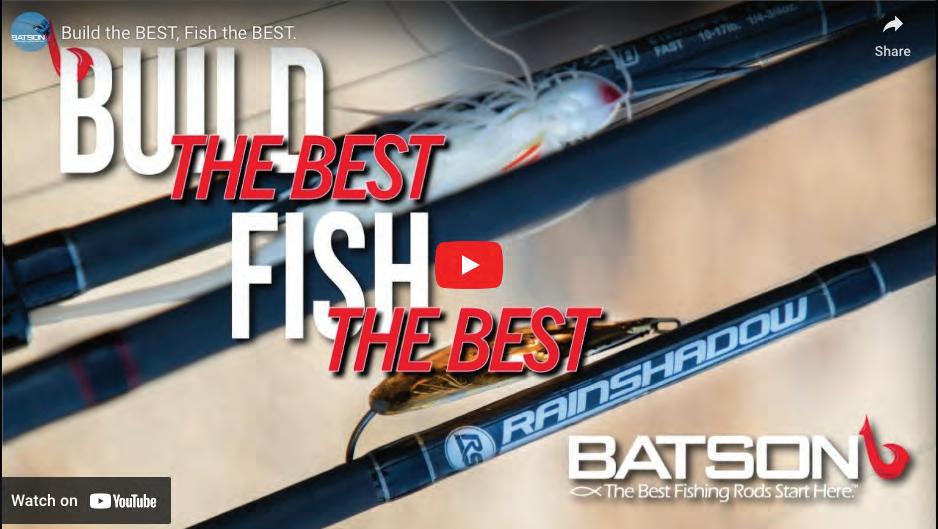

For the past 25 years Batson has provided the best line up of rod blanks and components in the industry. Now we’re offering direct access to our network of professional rod builders that make it easy to outfit your boat with rods built to fish your way. Click this ad to visit us online, browse rod blank and component options, and get in contact with the best fishing rod creators in the business.
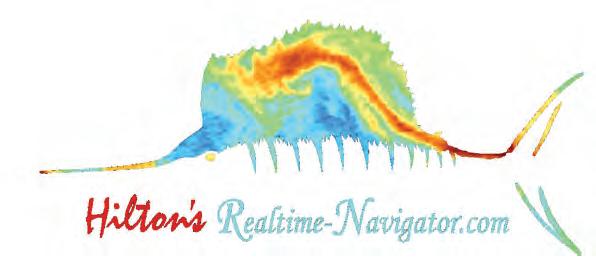
Hilton’s innovative SAT2NAV system connects your Garmin, Furuno or Raymarine chart plotters to HiltonsOffshore. com’s server directly from your MFD. Customize/download the latest dynamic charts and then navigate on them outside of cell range — ALL FROM YOUR MFD SCREEN!
Split screen a Hilton’s chlorophyll or sea temp chart along with a bathymetry chart and/or instrumentation.



Since 2004, Hilton’s has helped serious offshore anglers catch more fish while burning less gas. This is the company that pioneered online satellite fish forecasting with timely updated charts that display all of the pertinent fishfinding information at a reasonable cost for the best anglers in the world.
This year, Hilton’s pushed the industry forward again with its SAT2NAV system. In a quantum leap ahead of any other service in the industry, Hilton’s has brought its unparalleled charts where they belong… to your boat’s chart plotter screen!
Gone are the days when a separate smart device was required to navigate on charts downloaded while in cell phone range. SAT2NAV allows you to surf Hilton’s online mapping portal, select desired charts and then navigate on them—all on the water and all from the multifunction display in your cockpit. Nobody in the industry can do what Hilton’s is doing with SAT2NAV.
SAT2NAV is an external device that connects to the monitors of your Garmin, Raymarine or Furuno multifunction displays. It has its own WIFI and GPS antennas and brings access to Hilton’s charts to the monitors at your helm. It is now possible view your vessel’s position relative to temperature breaks, color changes, high-res bathymetry, altimetry, etc. on your multifunction display.
With split-screen, all of this powerful imagery can be displayed alongside sonar, radar or other desired information.
With SAT2NAV, it’s never been easier to identify and navigate to ocean features where bait and gamefish congregate. You can do your homework on the charts at home, but sometimes it’s necessary to call an audible on the water. With Hilton’s charts clearly visible on your monitor, you can find those good currents, minute temperature changes, sea-surface upwellings, color breaks and navigate to them. Perhaps more importantly, you can eliminate dead water, which makes you a much more efficient and effective angler.


Of course, all of this comes with Hilton’s unrivaled service. Their philosophy, reputation and longevity in the industry rely on the concept that if the information doesn’t help you catch fish, you won’t use it. So, they continually strive to provide the best up-to-date imagery, information and technology, and they’ll go above and beyond to make sure you know what you’re looking at and how to use it.
Hilton’s, again, is leading the industry. With SAT2NAV they can do what no one else in the industry can do right now. At the same time, they are continually working to be better with additional eye-opening features that will further distinguish Hilton’s as the best in the fish forecasting industry. Stay tuned…


The International Game Fish Association’s (IGFA) world record database is a great source for folks who like to see some of the great fish anglers are catching around the world. Here are a handful of catches recently approved for the record books. For more world records, visit the IGFA website at igfa.org.

On May 17, 2024, Vicki Martin landed a stunning 4-pound brown trout while fishing the White River in Arkansas. This catch has earned Vicki the IGFA Women’s 2 lb. Line Class World Record for the species. With the help of guide Craig Yowell, Vicki landed the record trout after a 6-minute fight. She recorded its weight on a certified scale before safely releasing the trout back into the river.
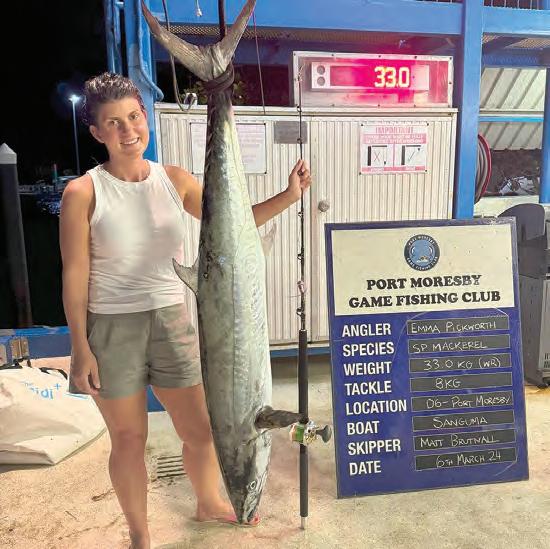
On March 6, 2024, Emma Pickworth, fishing out of Port Moresby, Papua New Guinea, landed an impressive 72-pound, 12-ounce narrowbarred mackerel. This catch has earned Emma the IGFA Women’s 30 lb. Line Class World Record for the species. The massive mackerel struck while Emma was trolling, and after a 45-minute battle, she successfully brought it boatside. Back at port, Emma weighed the record-setting fish on a certified scale.


On May 21, 2024, Randy Ritter set the IGFA Men’s 12 lb. Tippet Class World Record for sheepshead while fishing the flats of Hopedale, Louisiana. The 6-pound, 13-ounce sheepshead struck Randy’s crab fly while he was fishing with guide Miles LaRose. After landing the fish, Randy returned to Skiff Supply Fly Shop to record its weight on a certified scale.

On April 18, 2024, IGFA Representative Jan Forszpaniak landed a 20-pound milkfish while fishing off Christmas Island, Kiribati. This impressive catch set the IGFA Men’s 12 lb. Tippet Class World Record for the species. After a 20-minute battle, Jan returned to shore to record the weight on his certified scale. Jan remarked that milkfish are formidable opponents, known for their endurance and resistance to tiring quickly compared to other species.
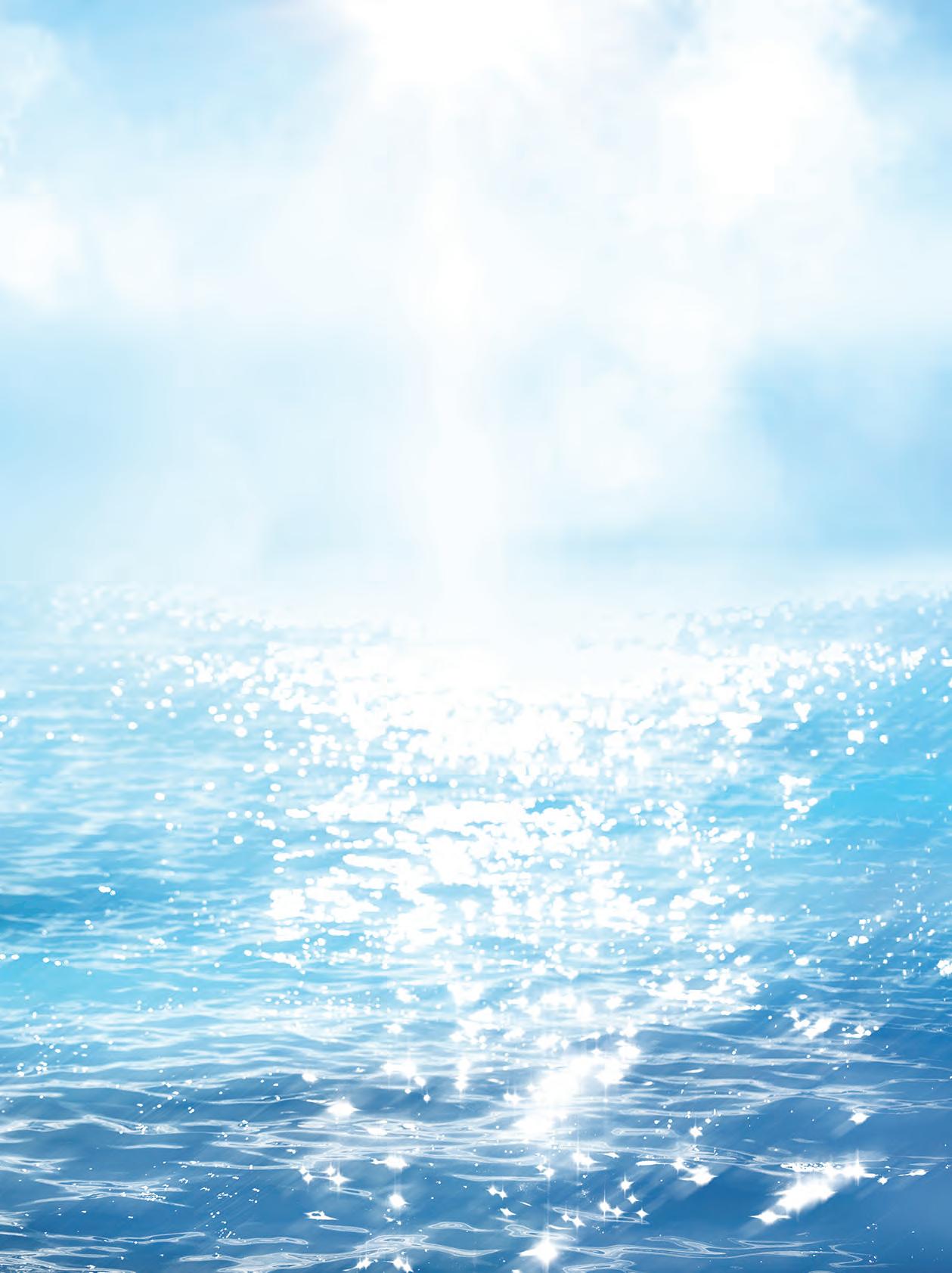
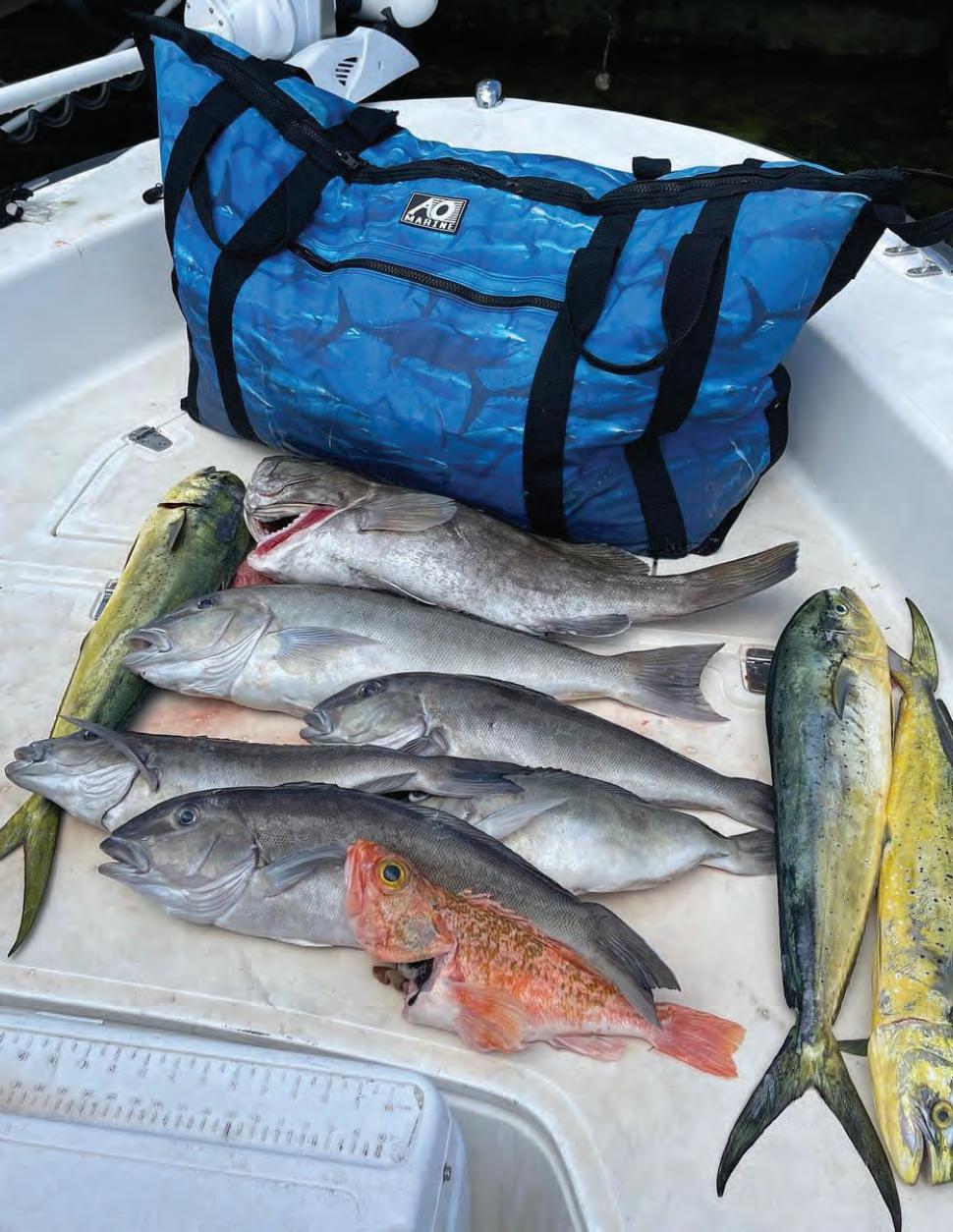






, the leader in high-performance soft-sided coolers, is hitting the water this year with new, upgraded fishing products. Our fishing team partners told us what they needed, and we listened!
Products are in stock and ready to ship; The Fishing Cooler Backpack, 2, 4 & 6ft Fish bags, Fillet bags, Boat fenders, EVA Traction pads, Inflatable Docks, ISUPs, and of course, our high-performance coolers specifically designed for use on boats, guaranteed not to leak, and to keep ice cold for up to 24 hours.
Thirty years ago, AO was launched to provide active, hard-core people with quality products at a reasonable price. We started selling our soft-sided coolers to the hard-core, go-fast boaters and fishermen in Lake Havasu. We aimed to keep ice in our coolers for up to 24 hours in 120-degree Havasu heat. That goal was accomplished 30 years ago, and we’re still at it.
We know our customers; they fish and boat in the summer and ride the dunes or trails in the winter. AO products give those high-octane souls greater freedom to embark on and enjoy what’s important to them.
Make sure that your gear does not hold you back from doing what you love. AO products are built to handle whatever offshore adventure is coming next.
AO is flexibly rugged, seriously fun, and honestly real!
We’re looking for active, adventurous folks that demand quality and performance from their gear. Share your adventure and send us your fish story or photo.

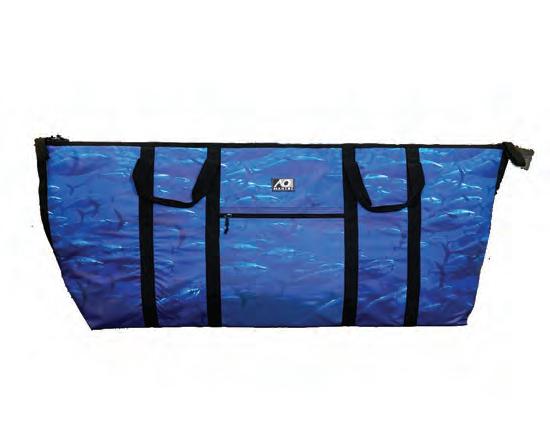





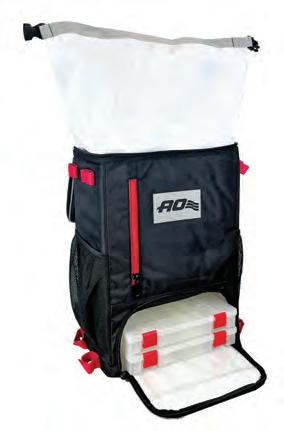



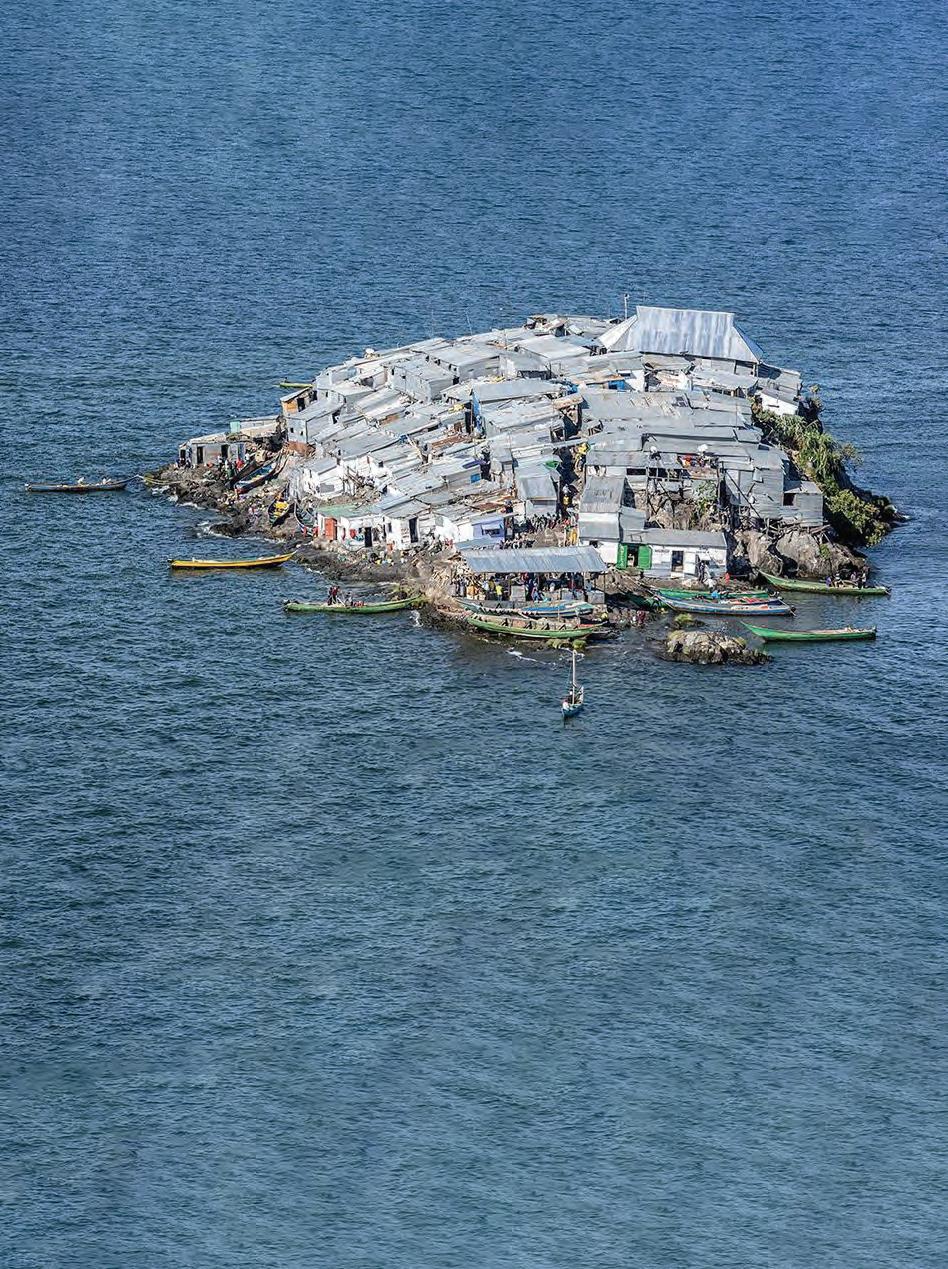






Coastal Angler Magazine and its freshwater component The Angler Magazine are looking to expand the franchise system in Ohio and the Great Lakes. Franchise territories are designed to ensure localized content is centered around where the Angler-Franchise owner fishes most often. Now is a great time to lock down a franchise in your area. No prior publishing experience is required; just a love of the outdoors and an enthusiasm for building a profitable business. If you or someone you know in the Ohio/Great lakes area would like to explore the opportunities associated with owning a Coastal Angler Magazine franchise, simply provide us with your contact information and we’ll make sure you get all the information you need to determine if this self-employment opportunity is a good fit for you. Our current franchises cover major fishing areas throughout the South and Gulf Coast. Our research leads us to believe that Ohio and the Great Lakes would be a super area for numerous franchise locations. Don’t miss this great opportunity to be a part of the largest outdoor publication in the US.
• Control Your Time and Earnings
• Enjoy



